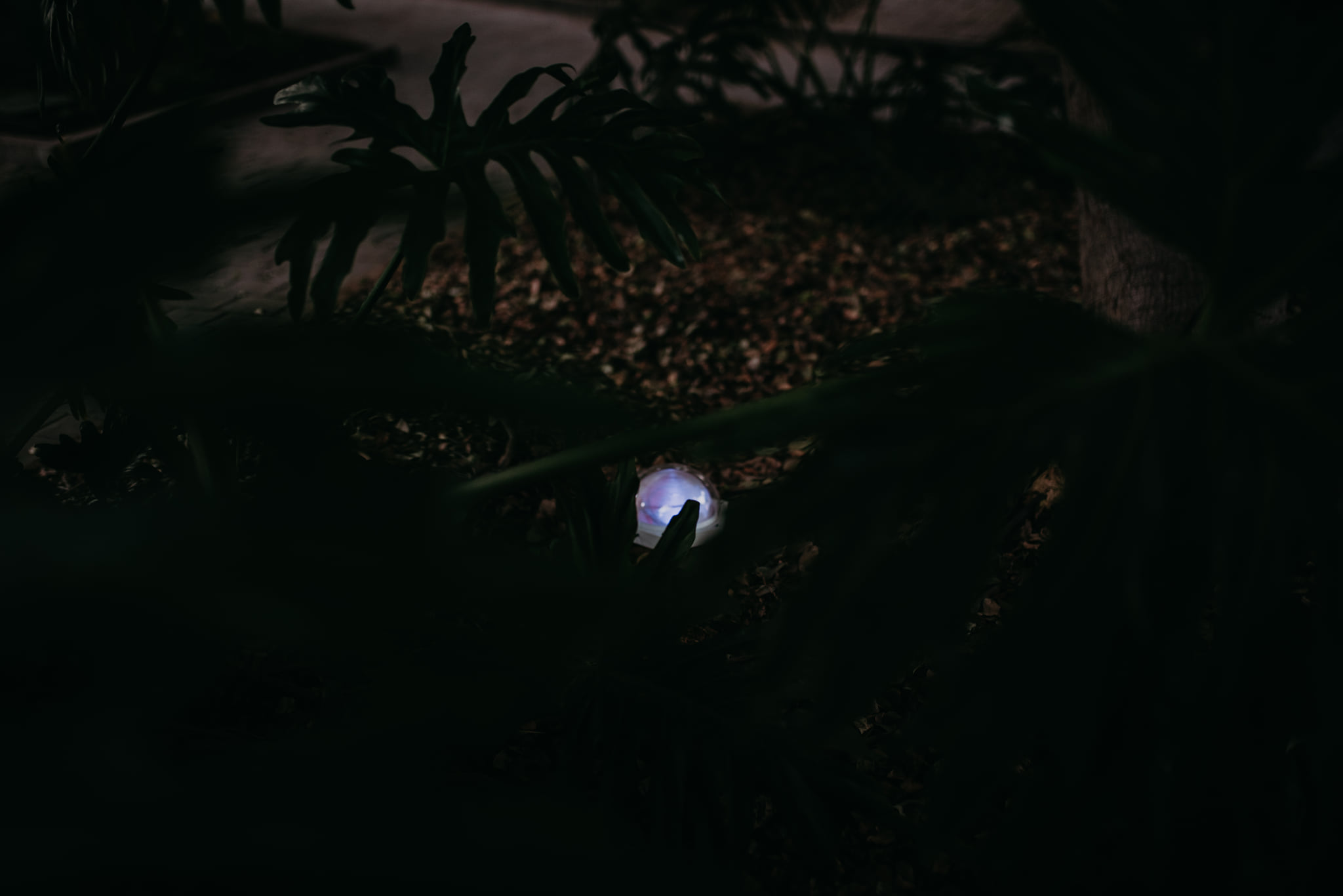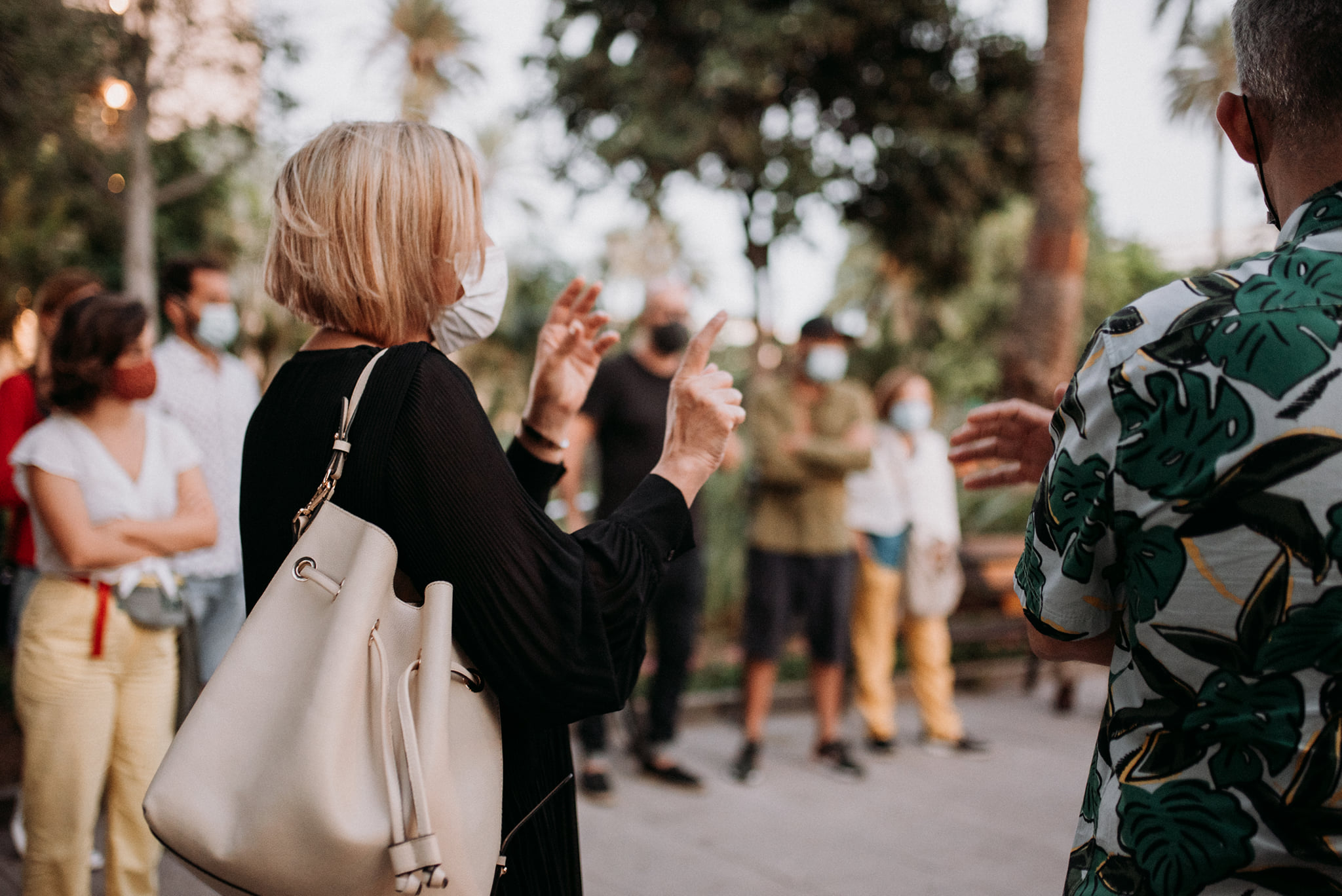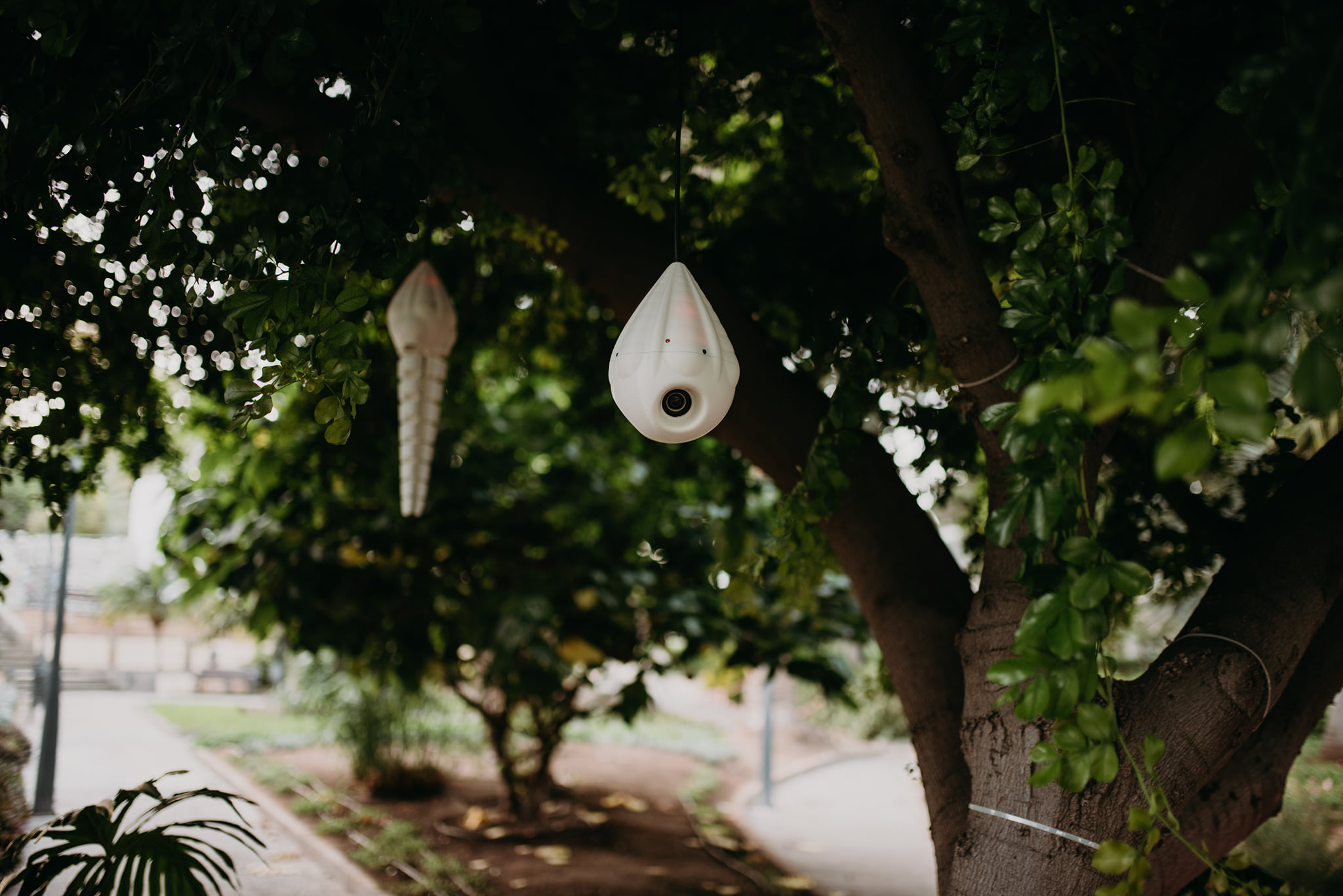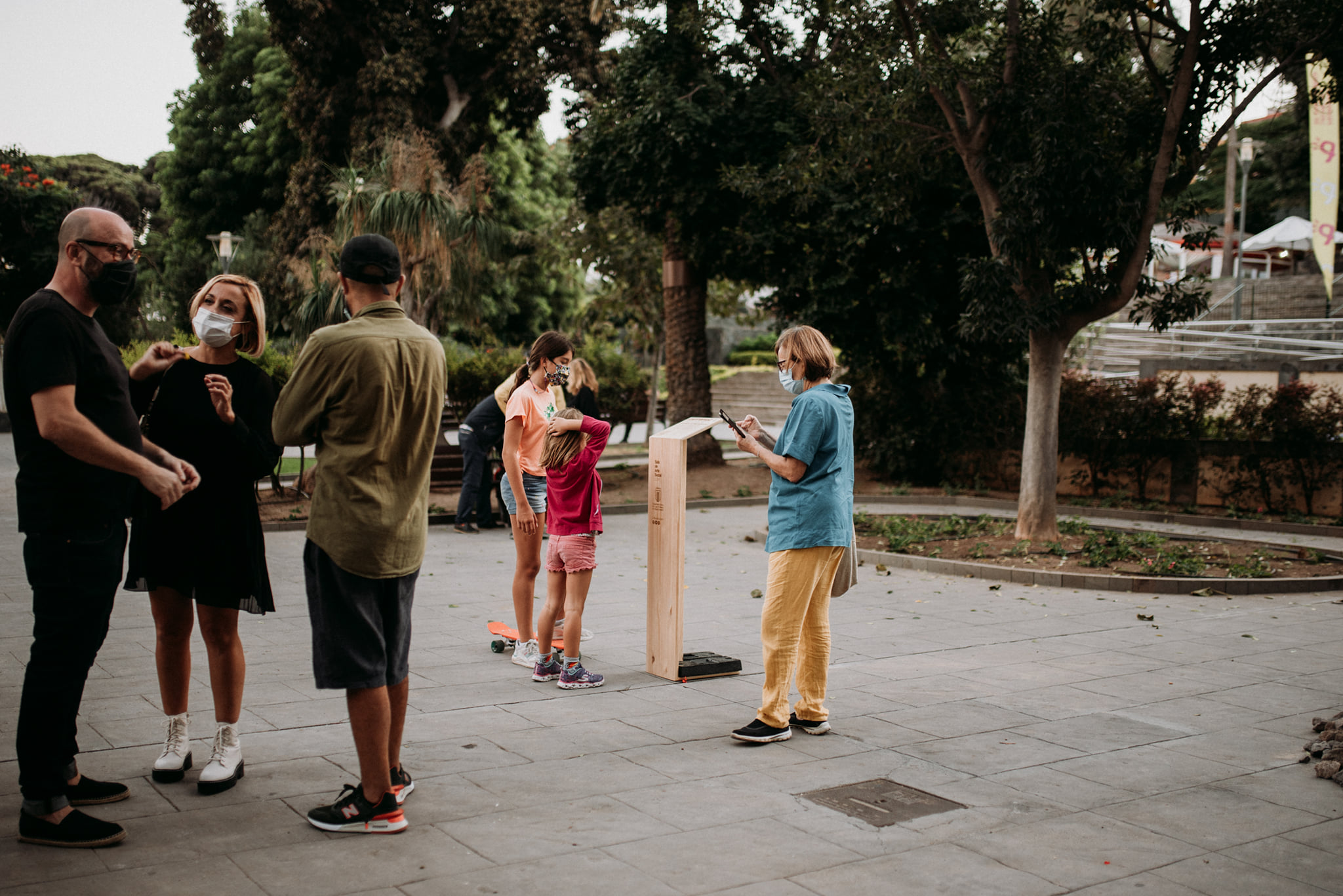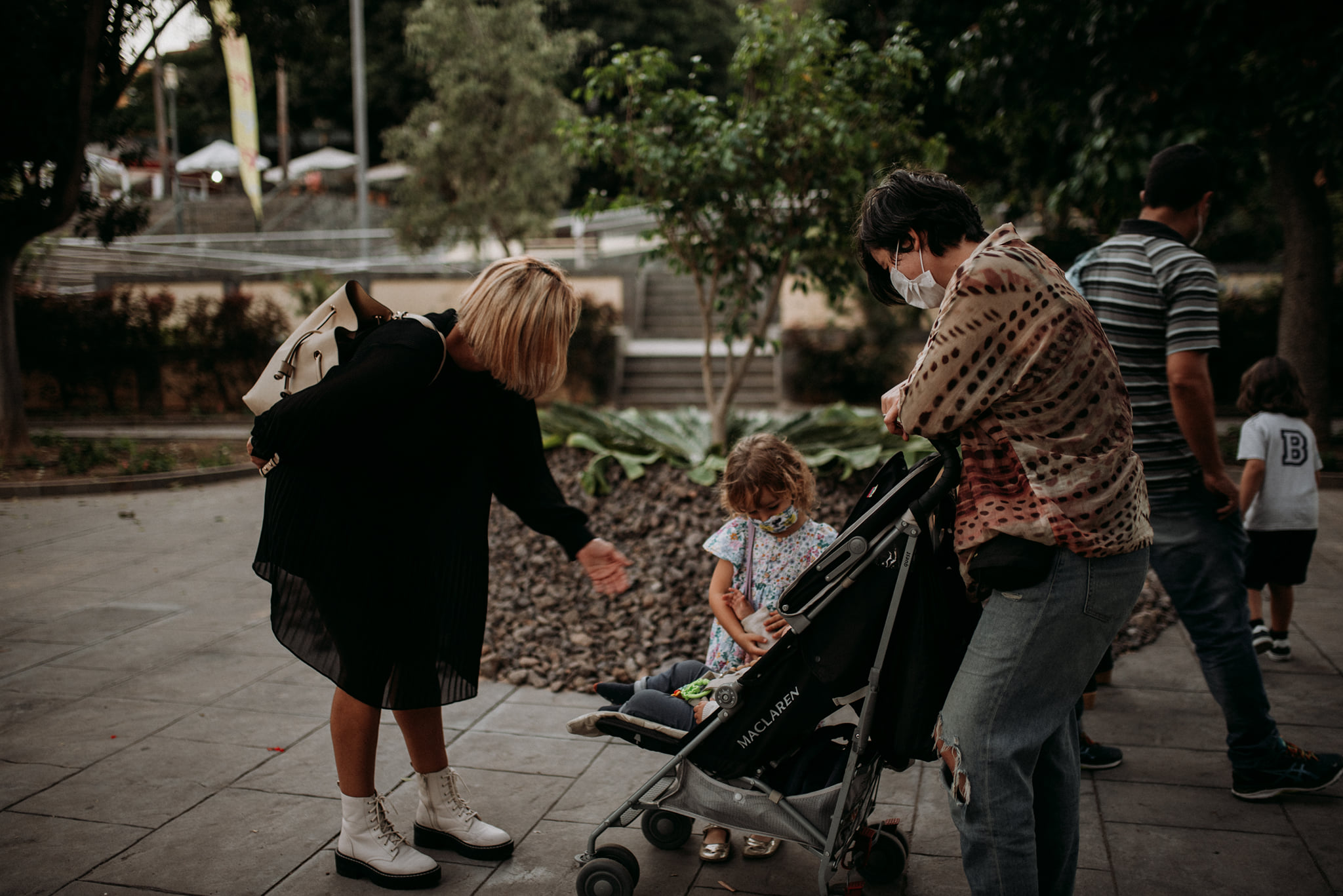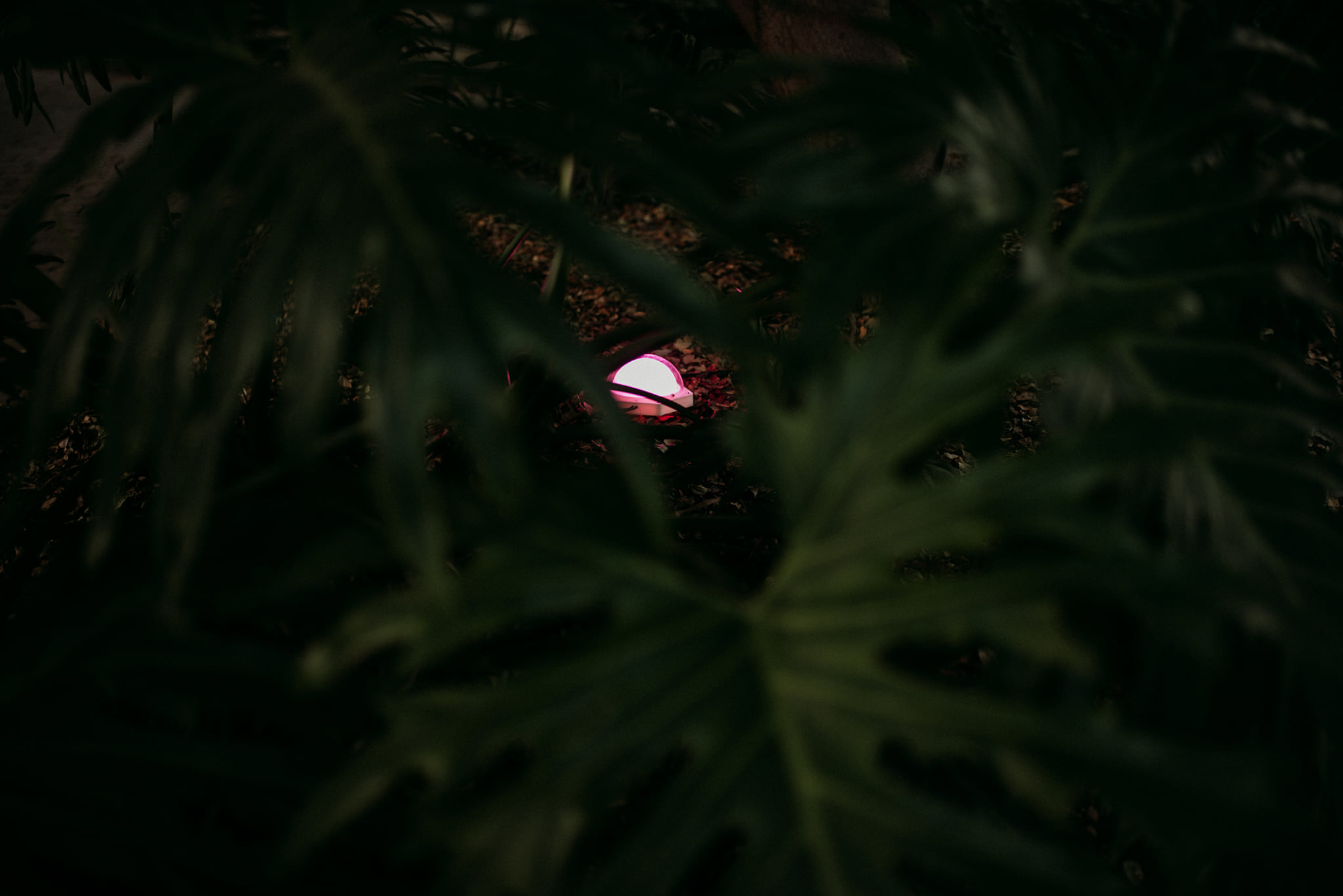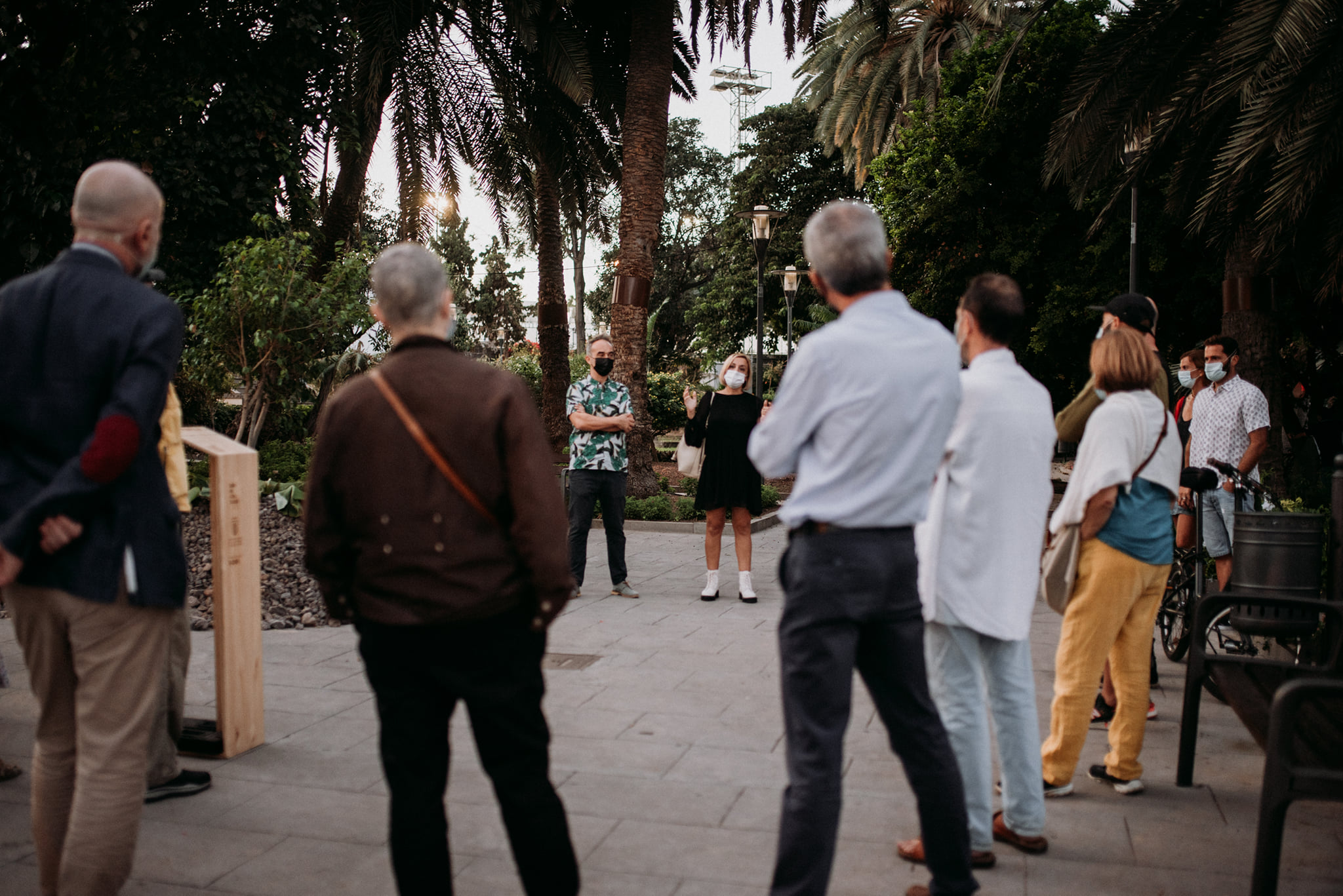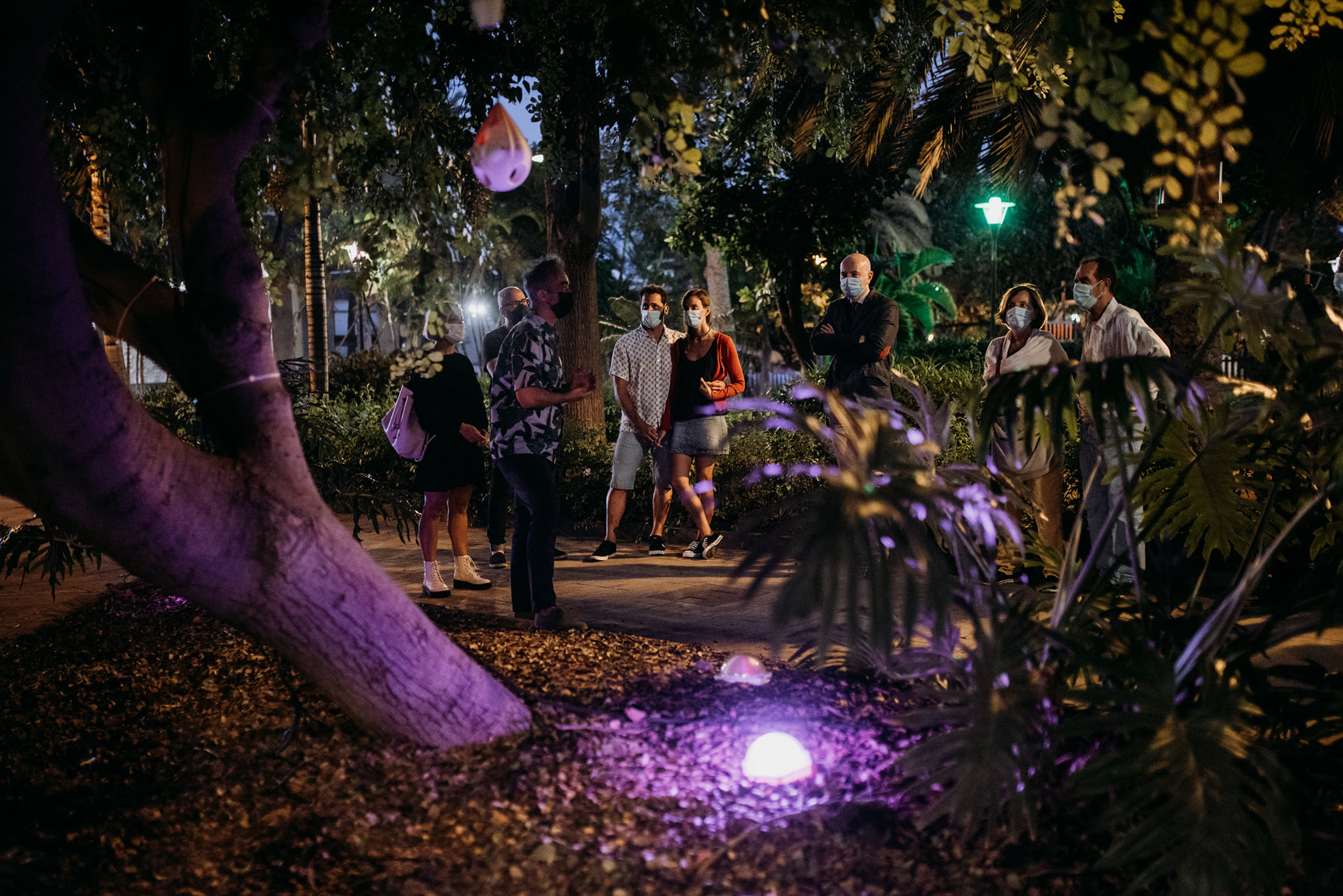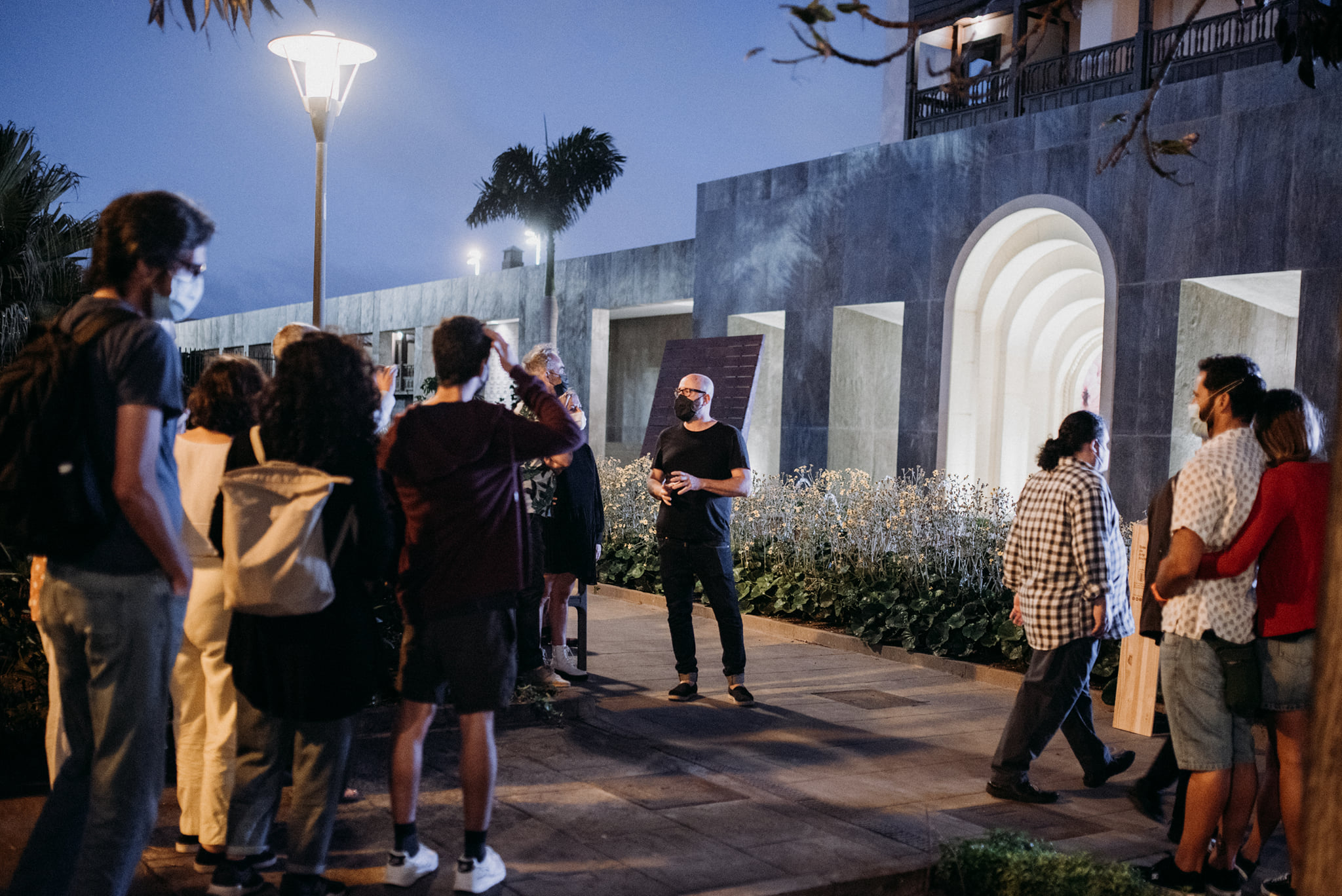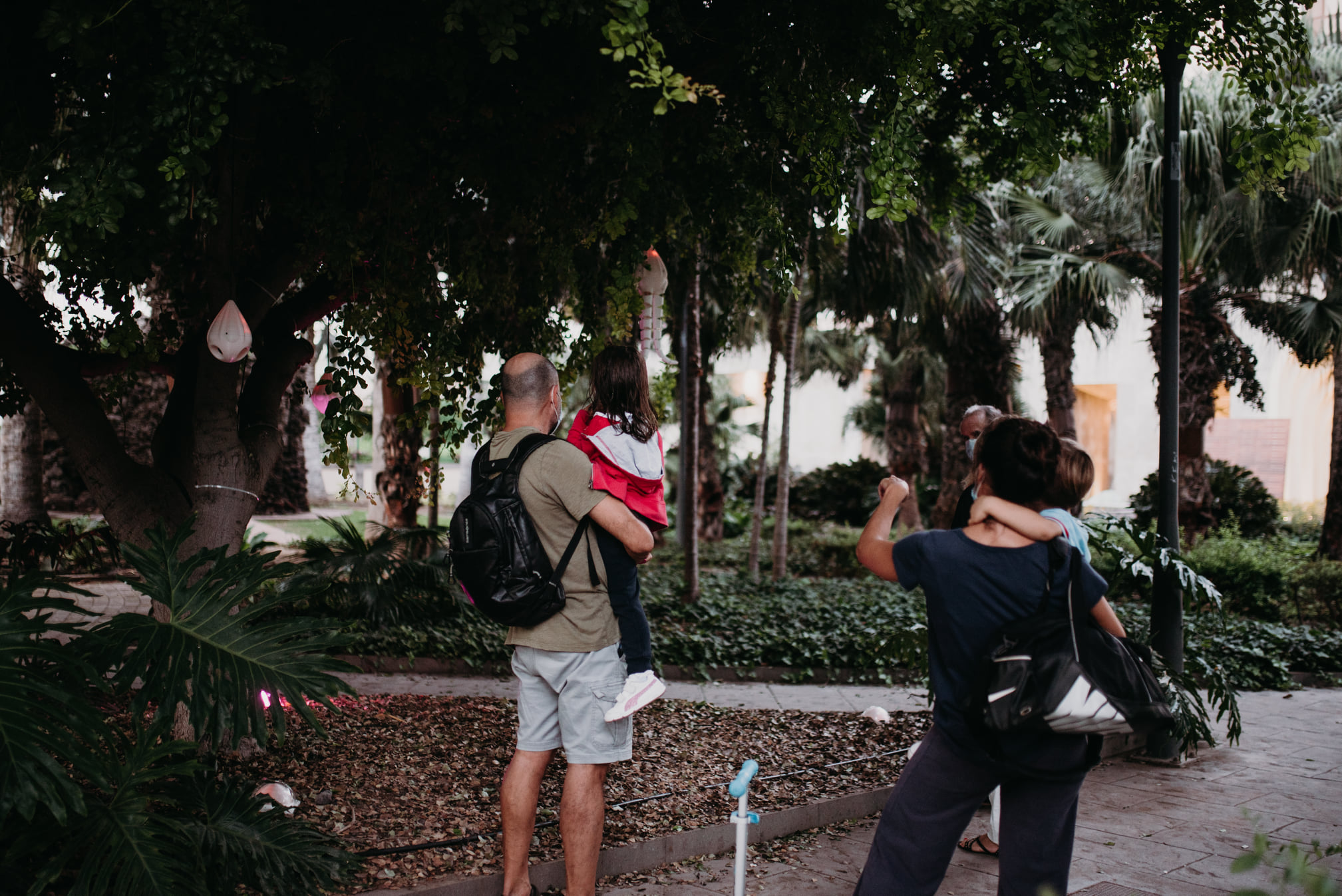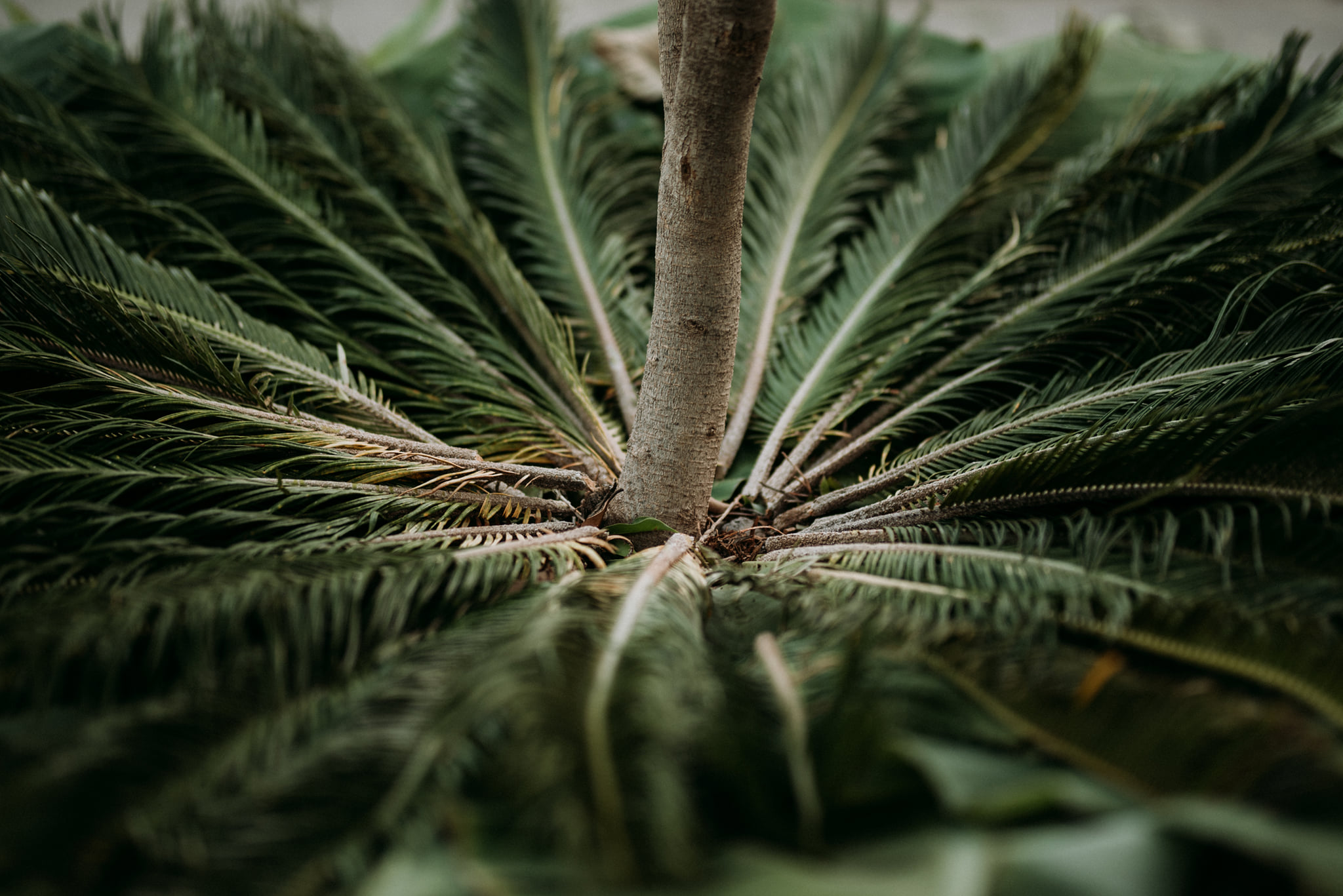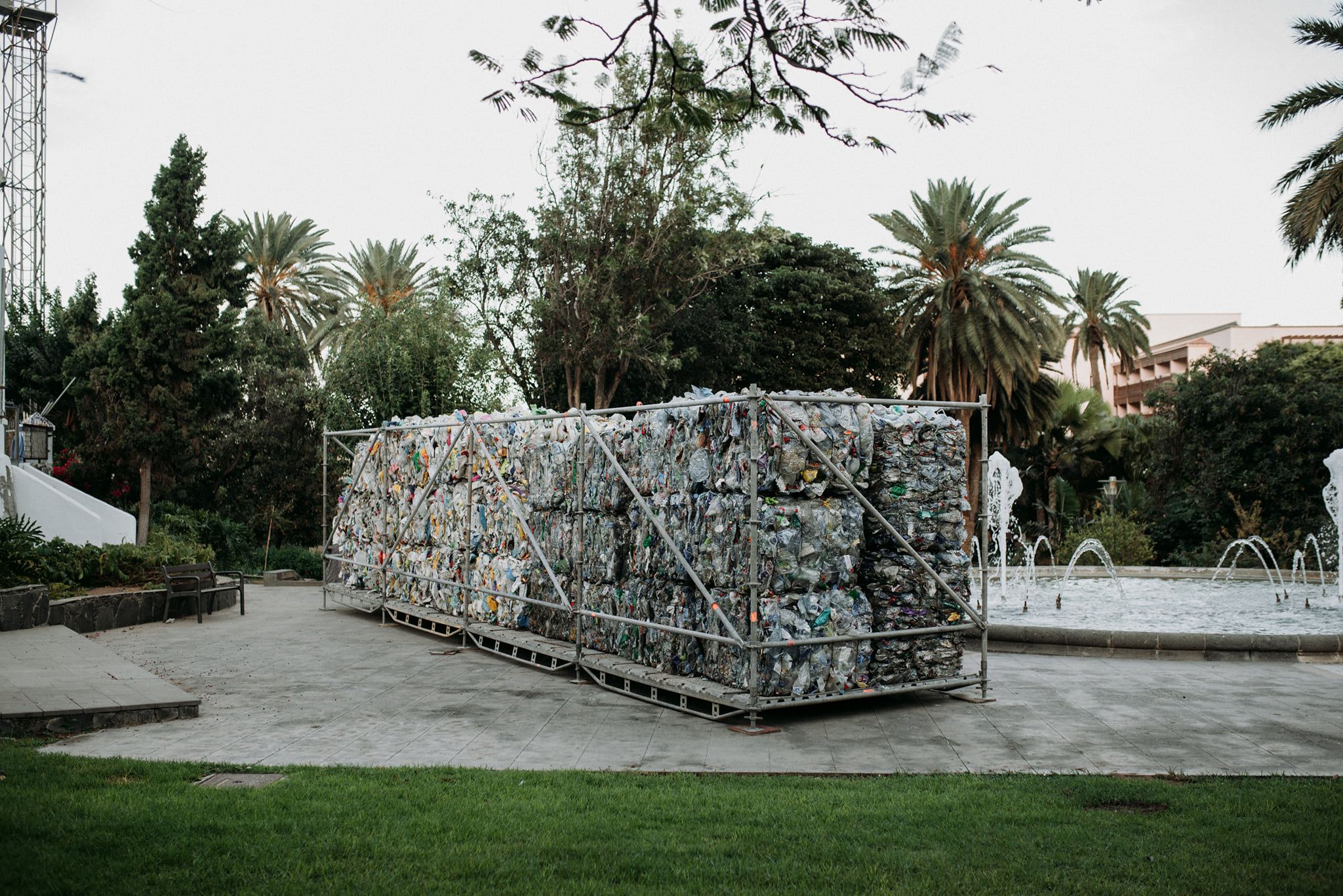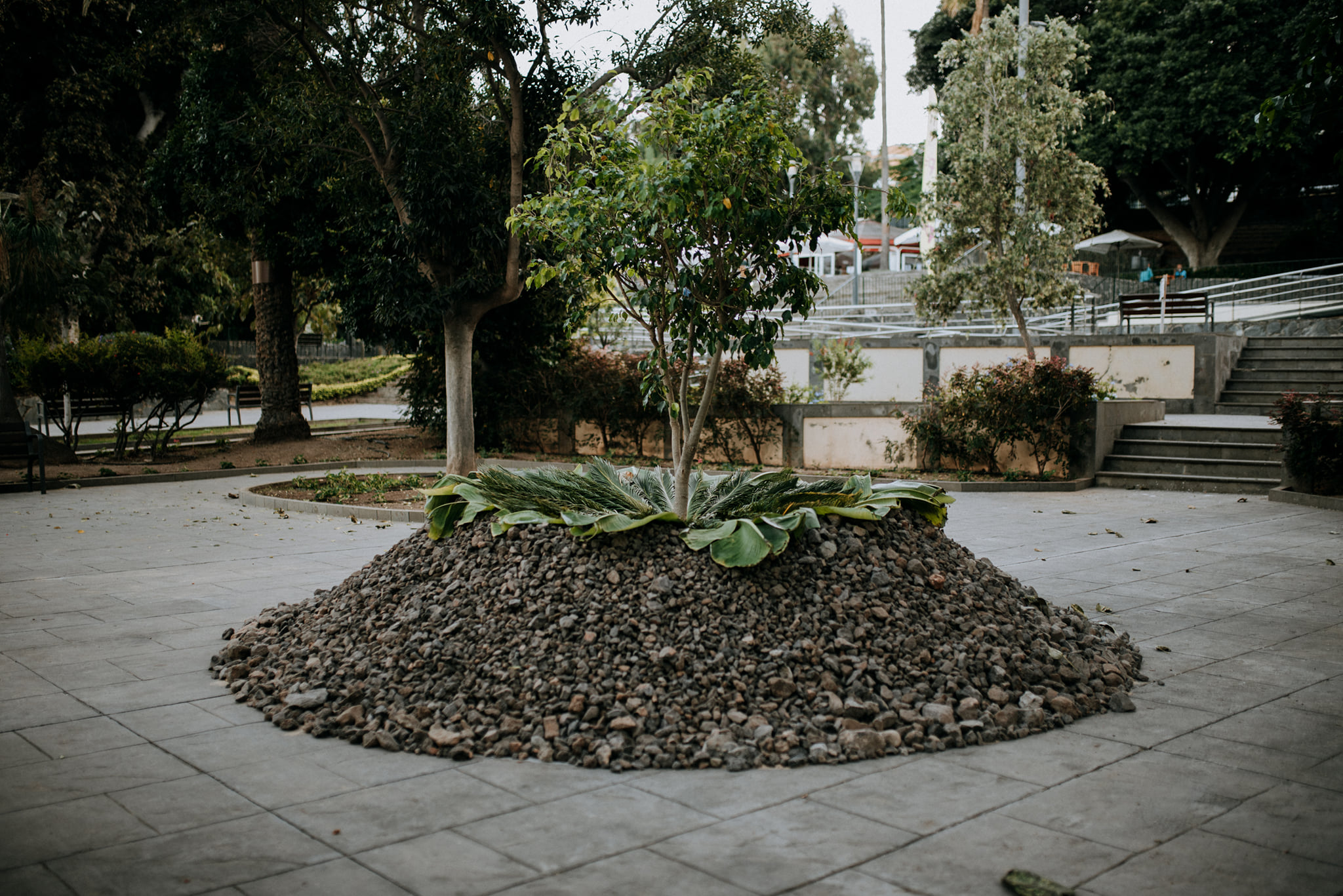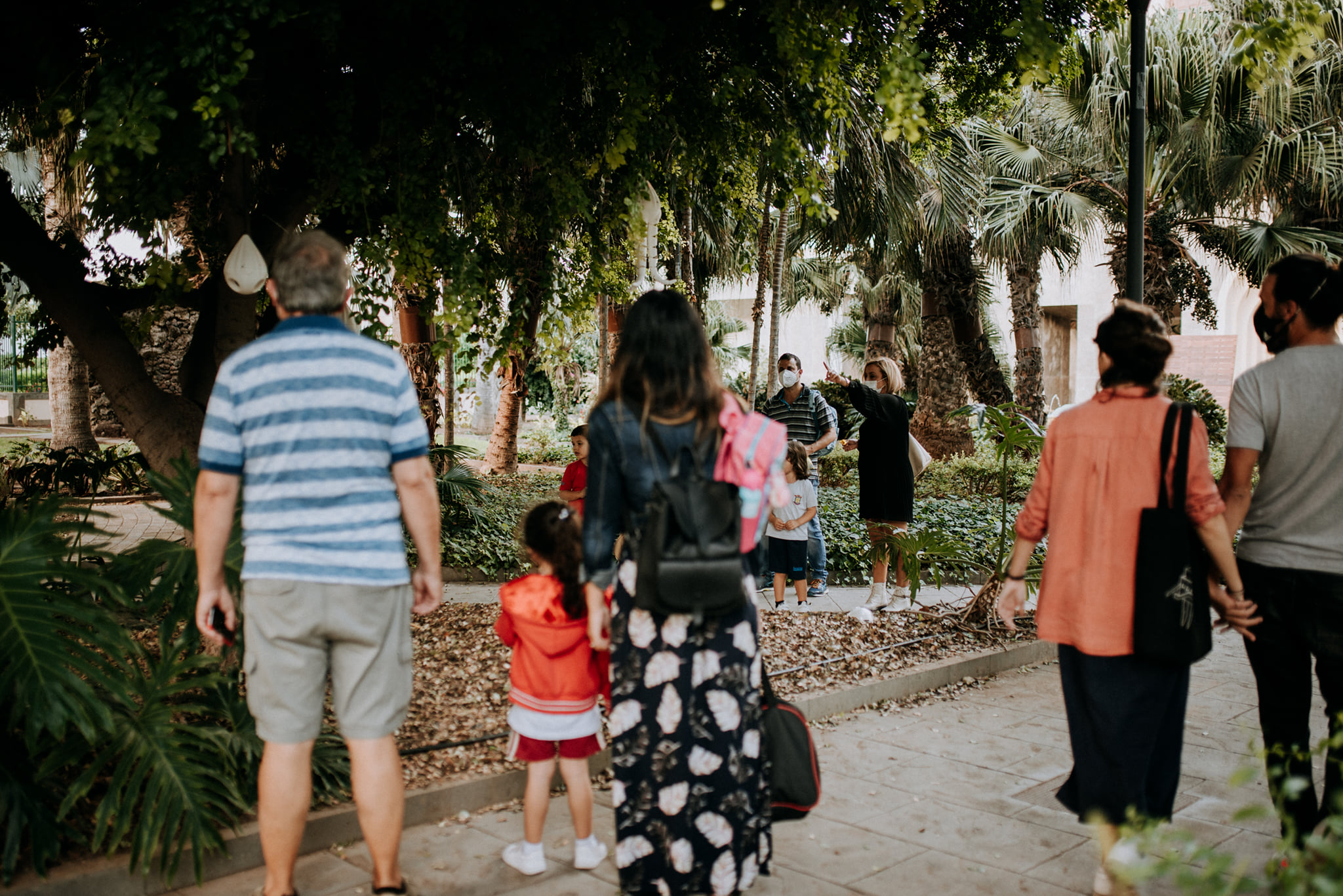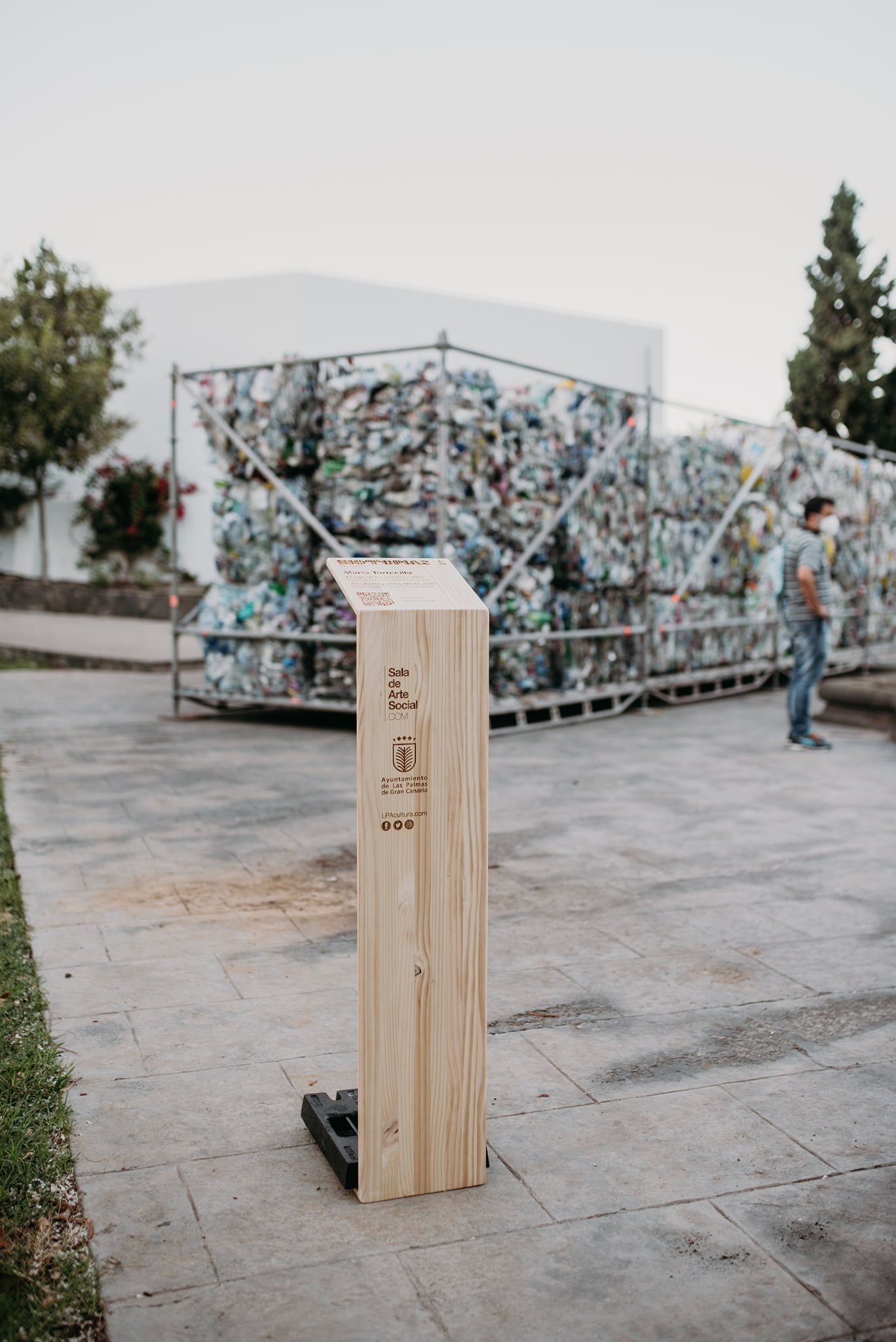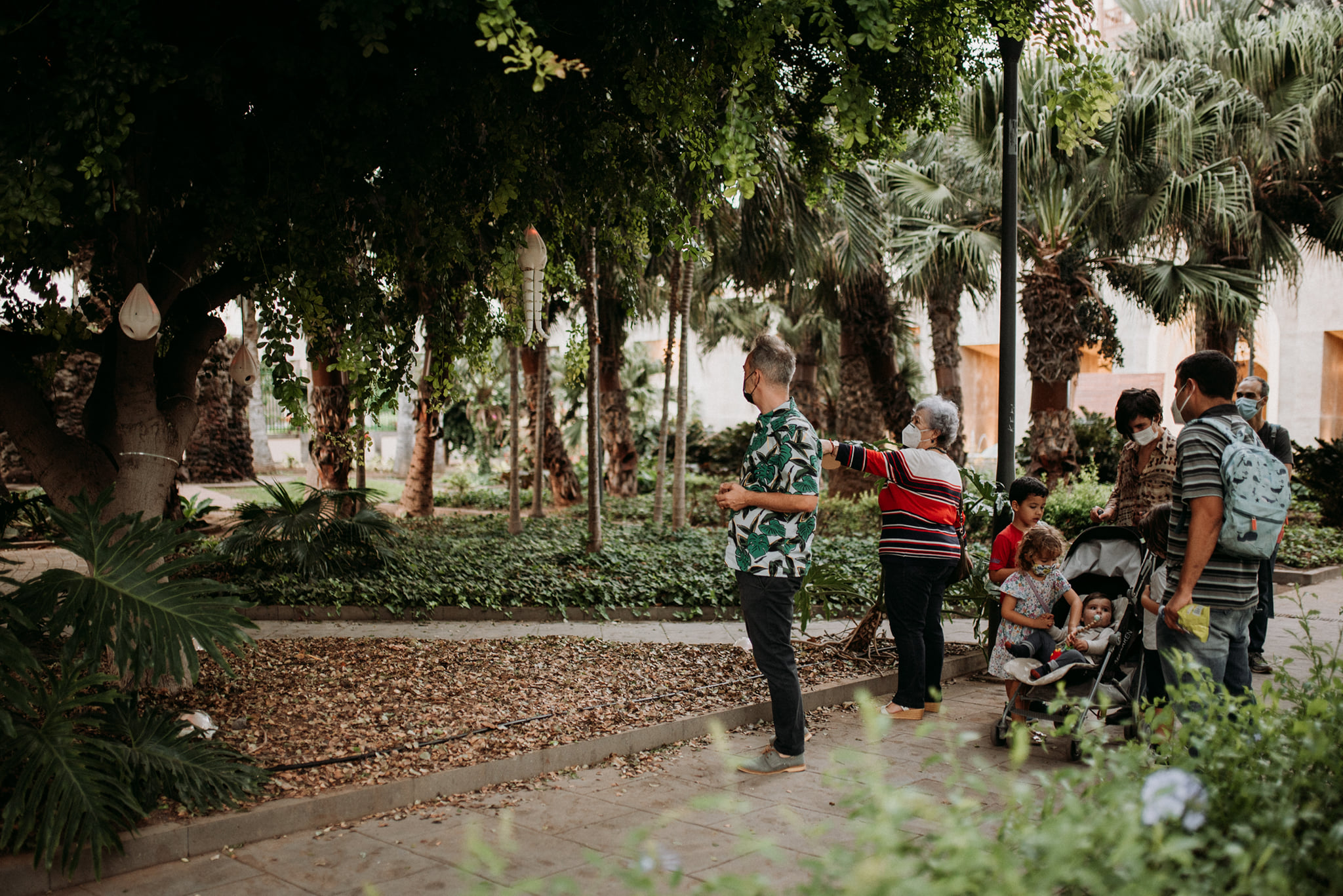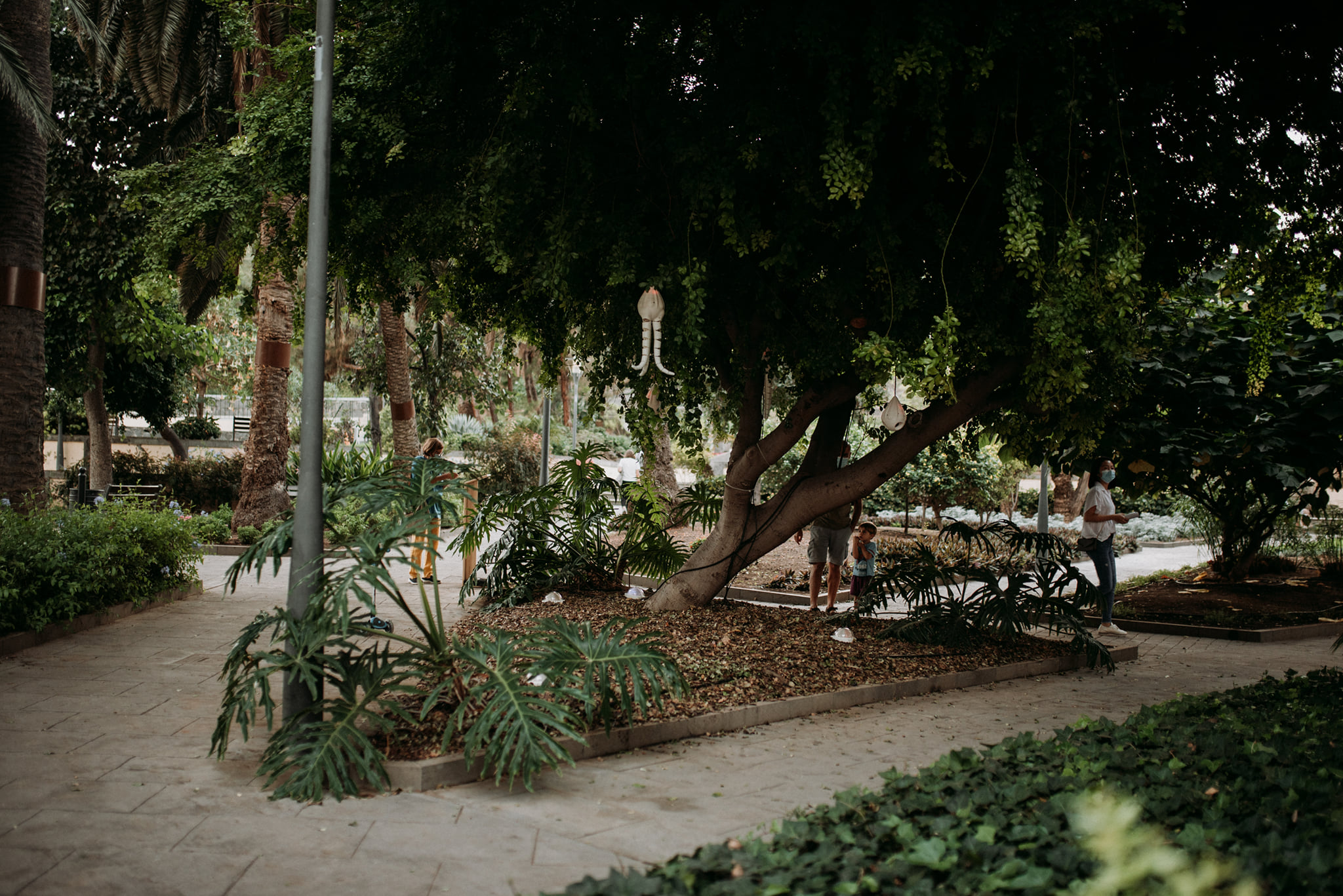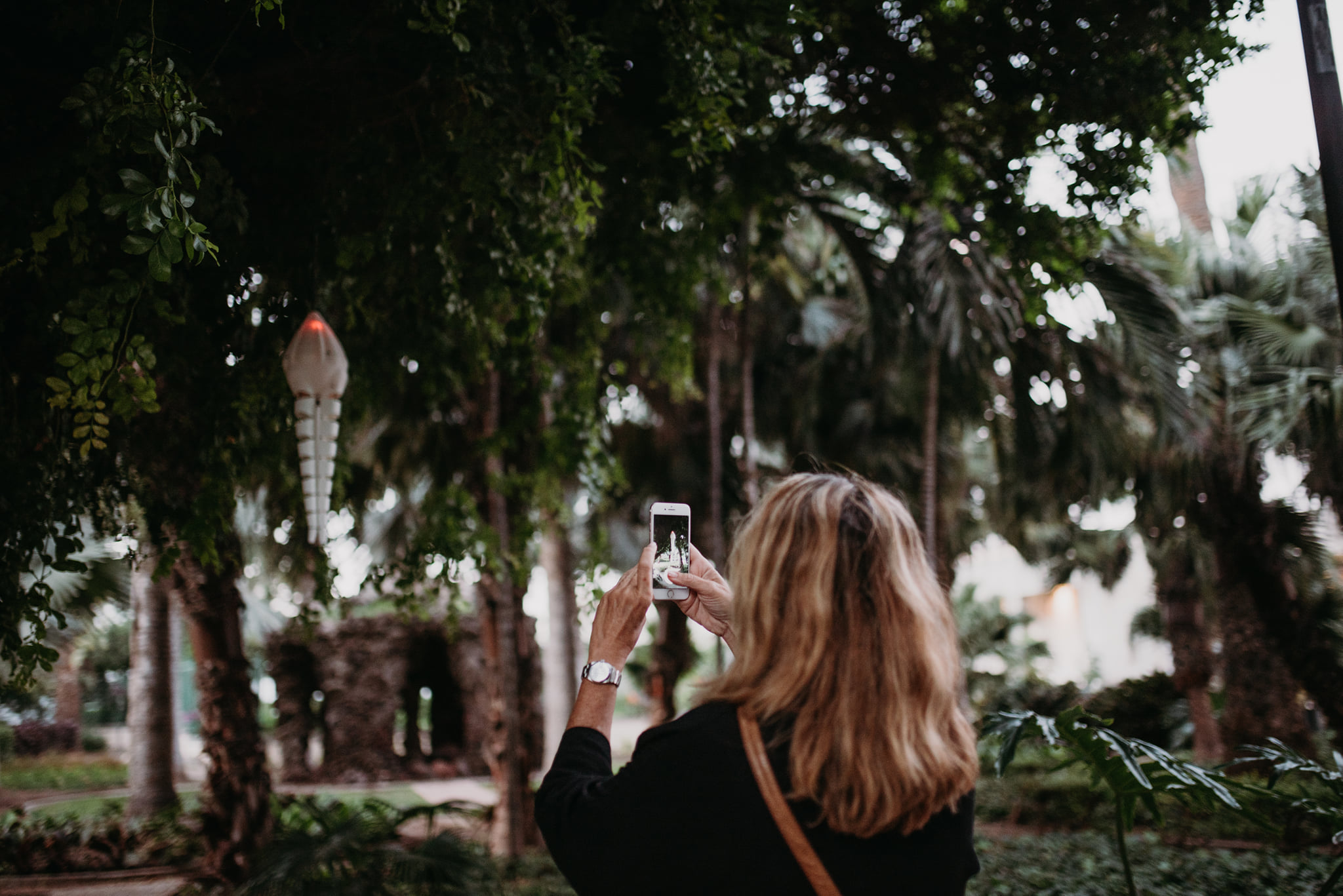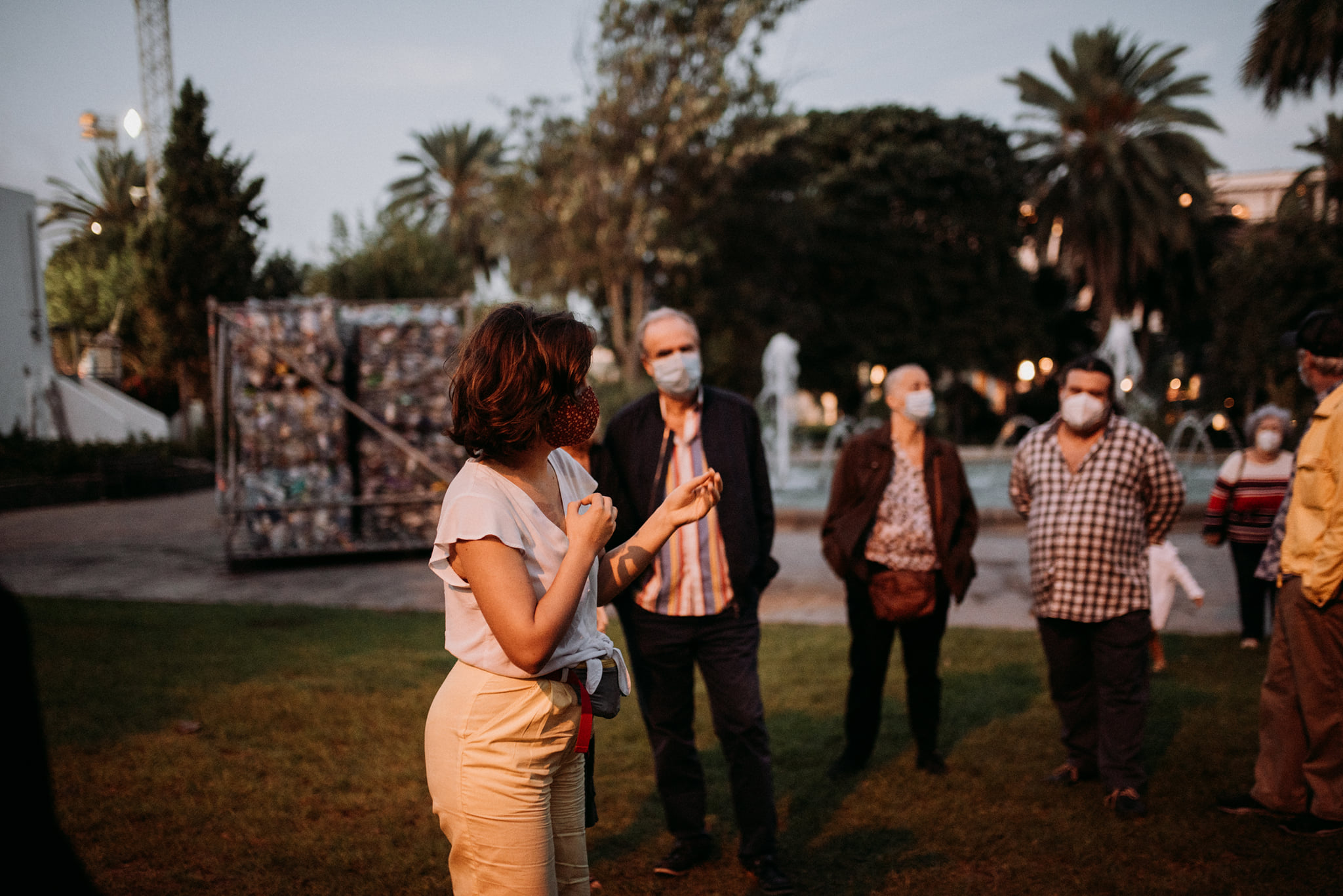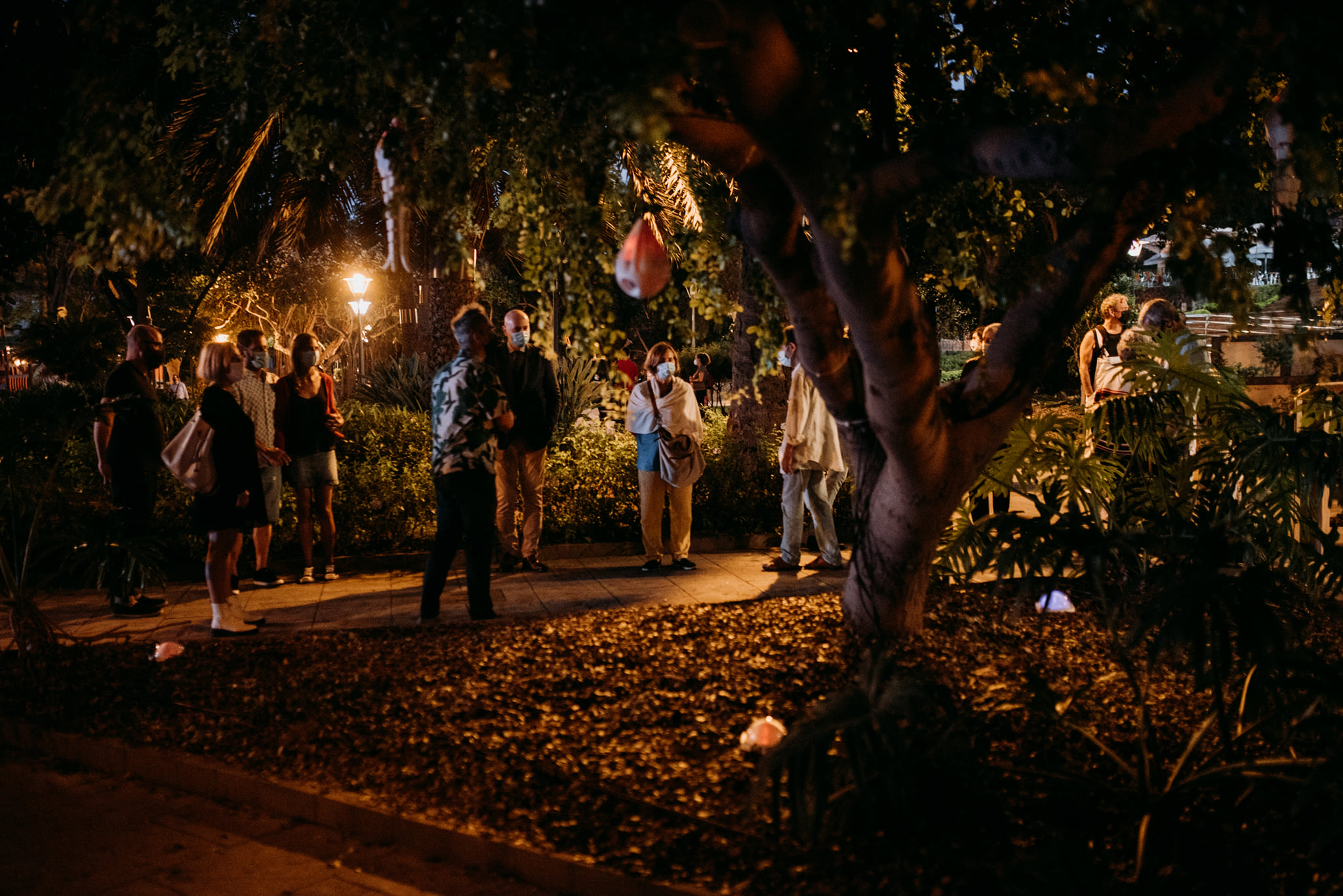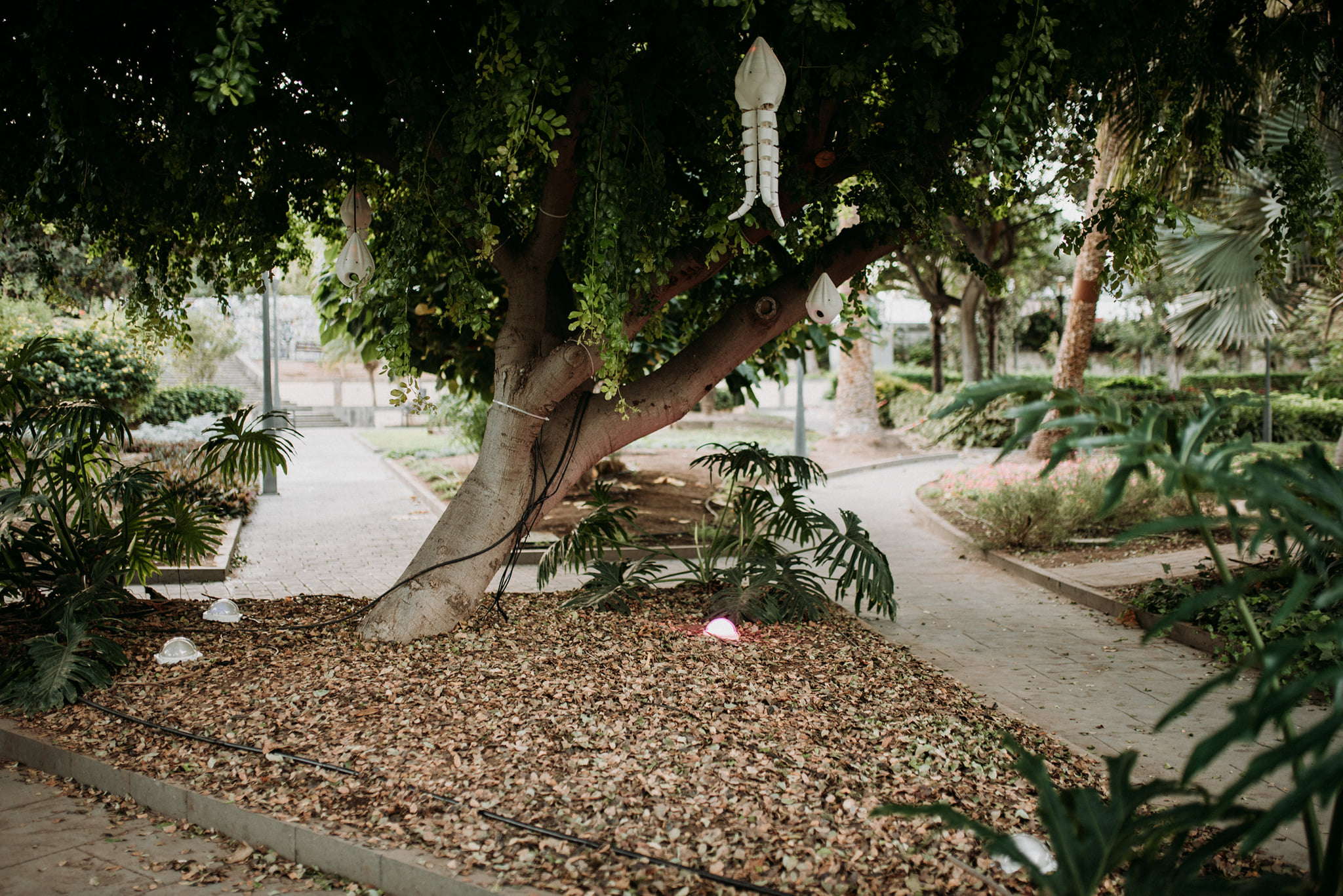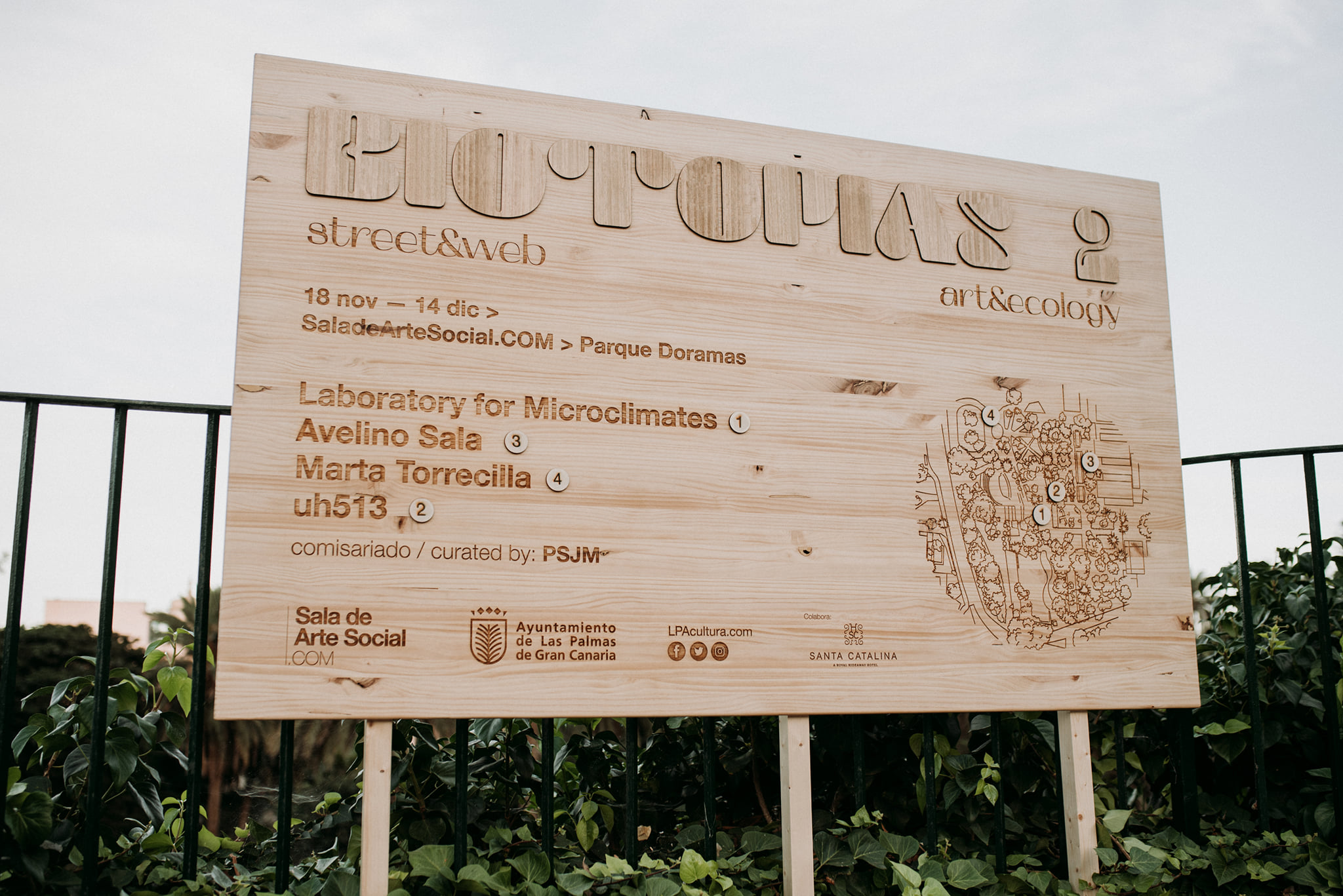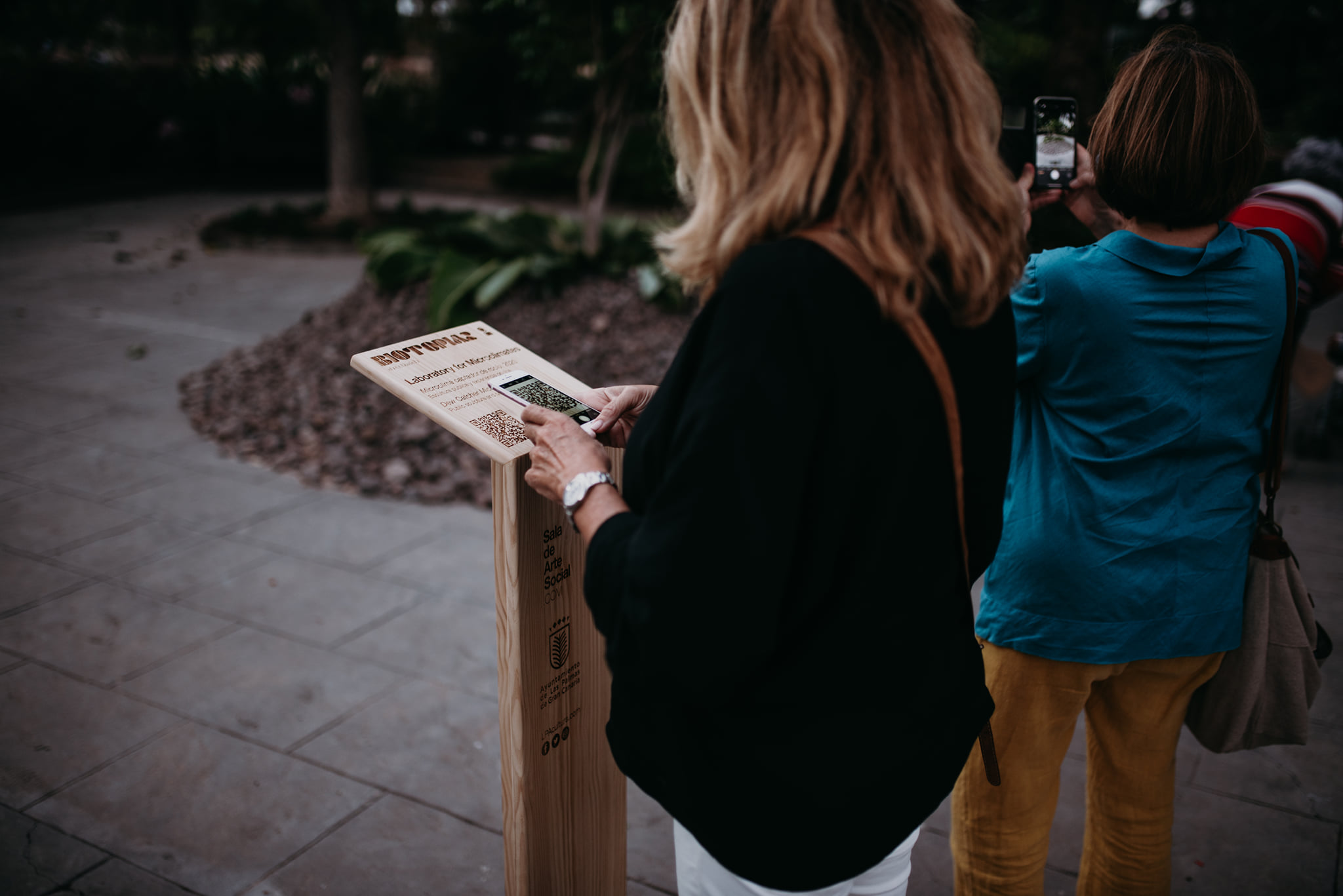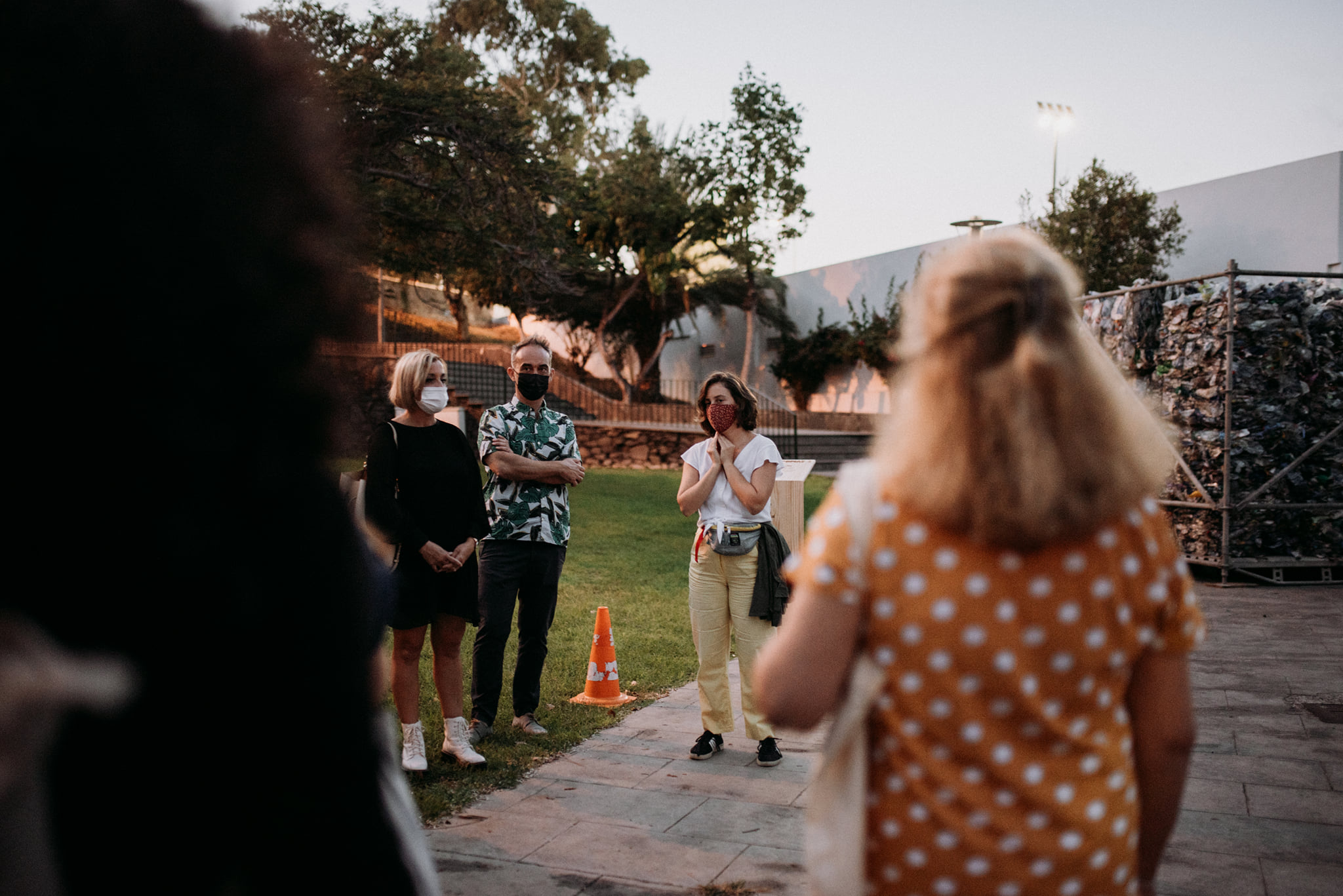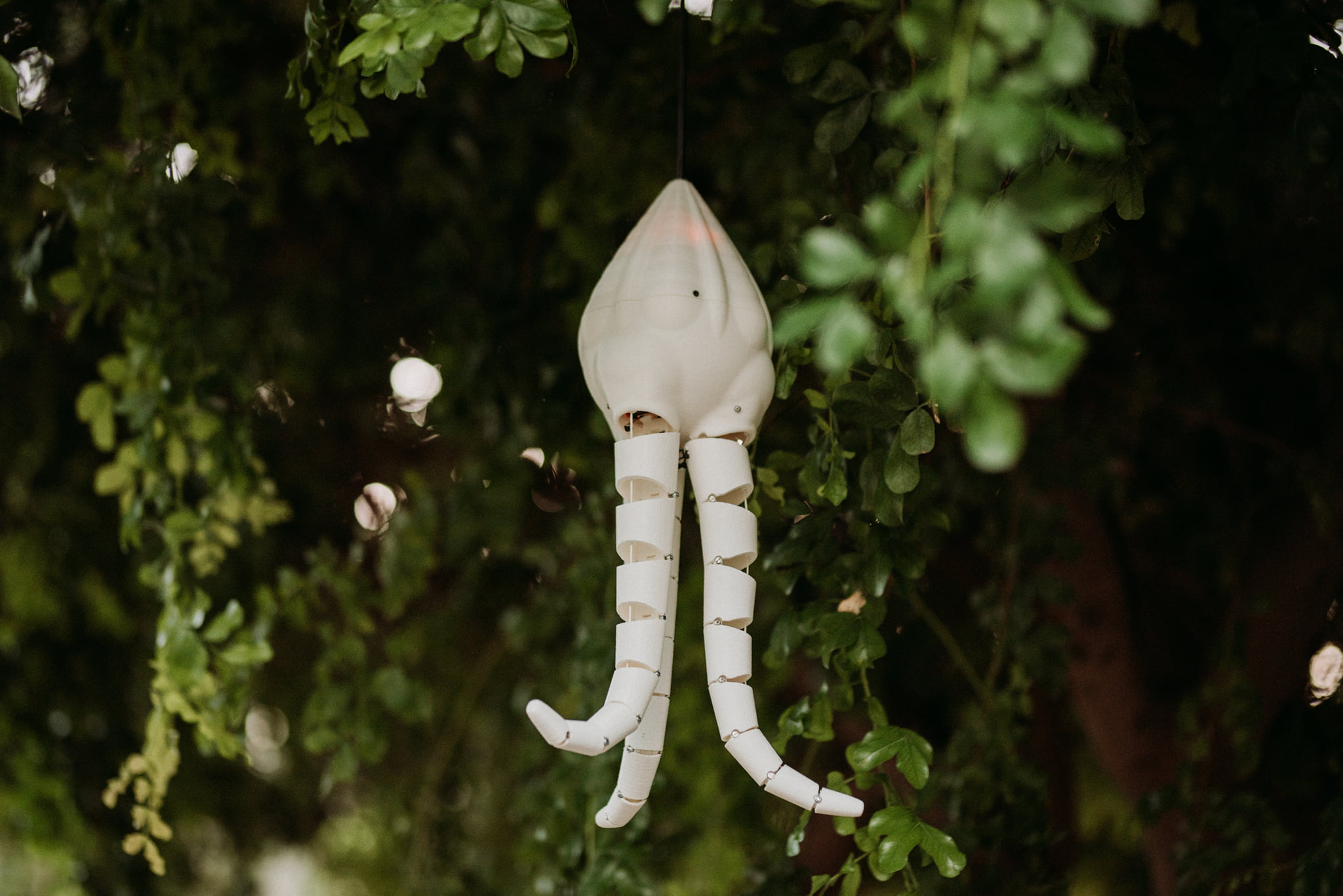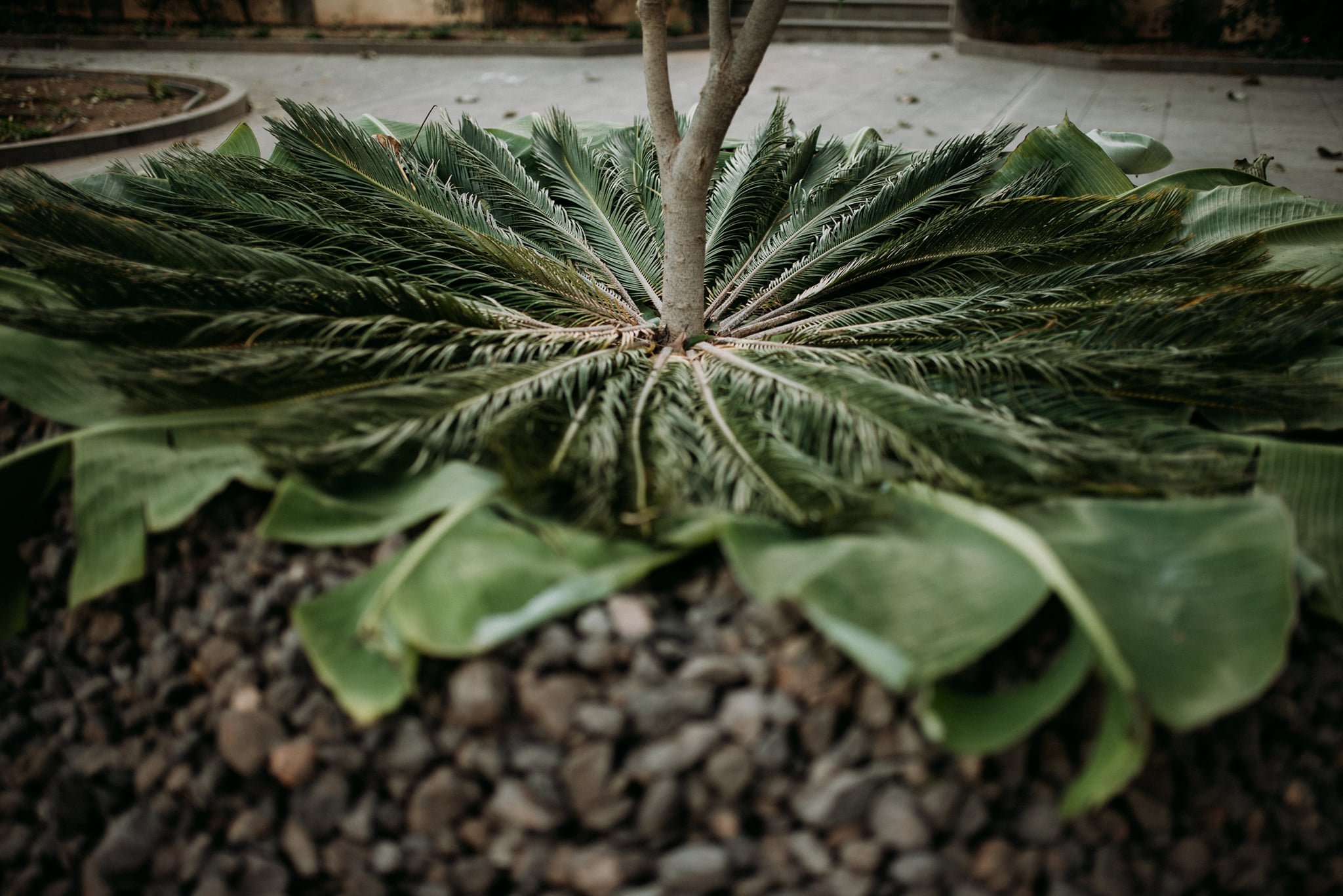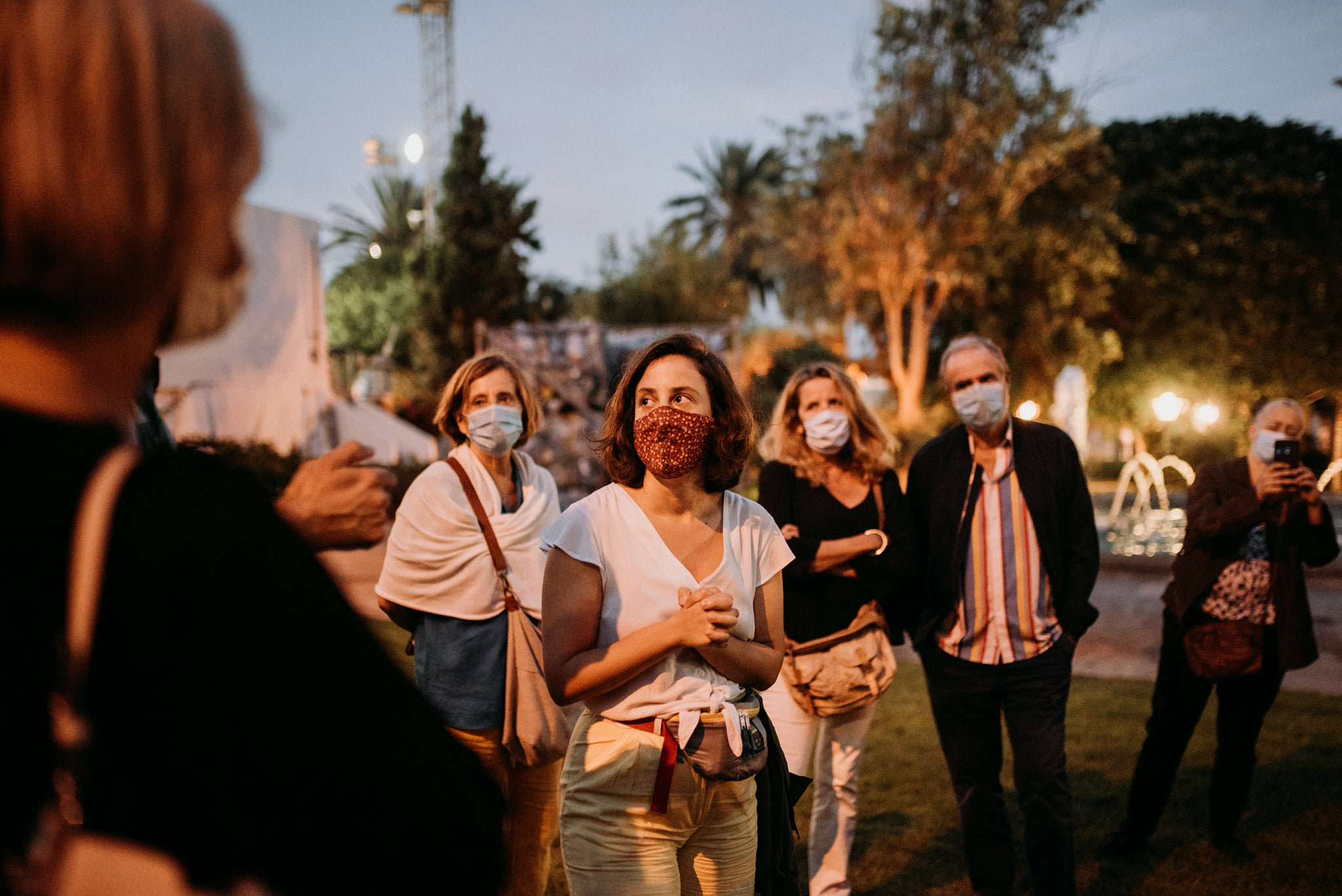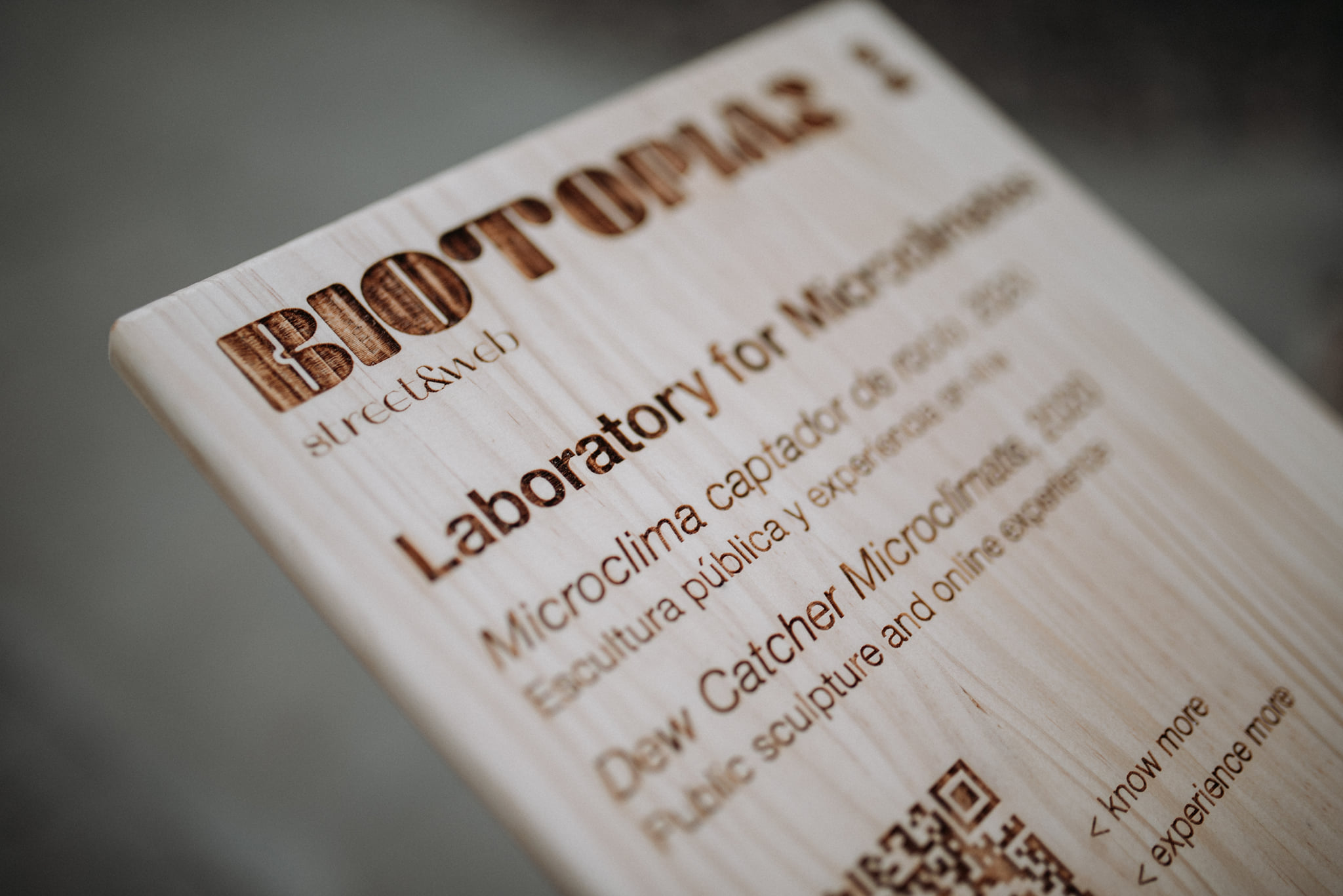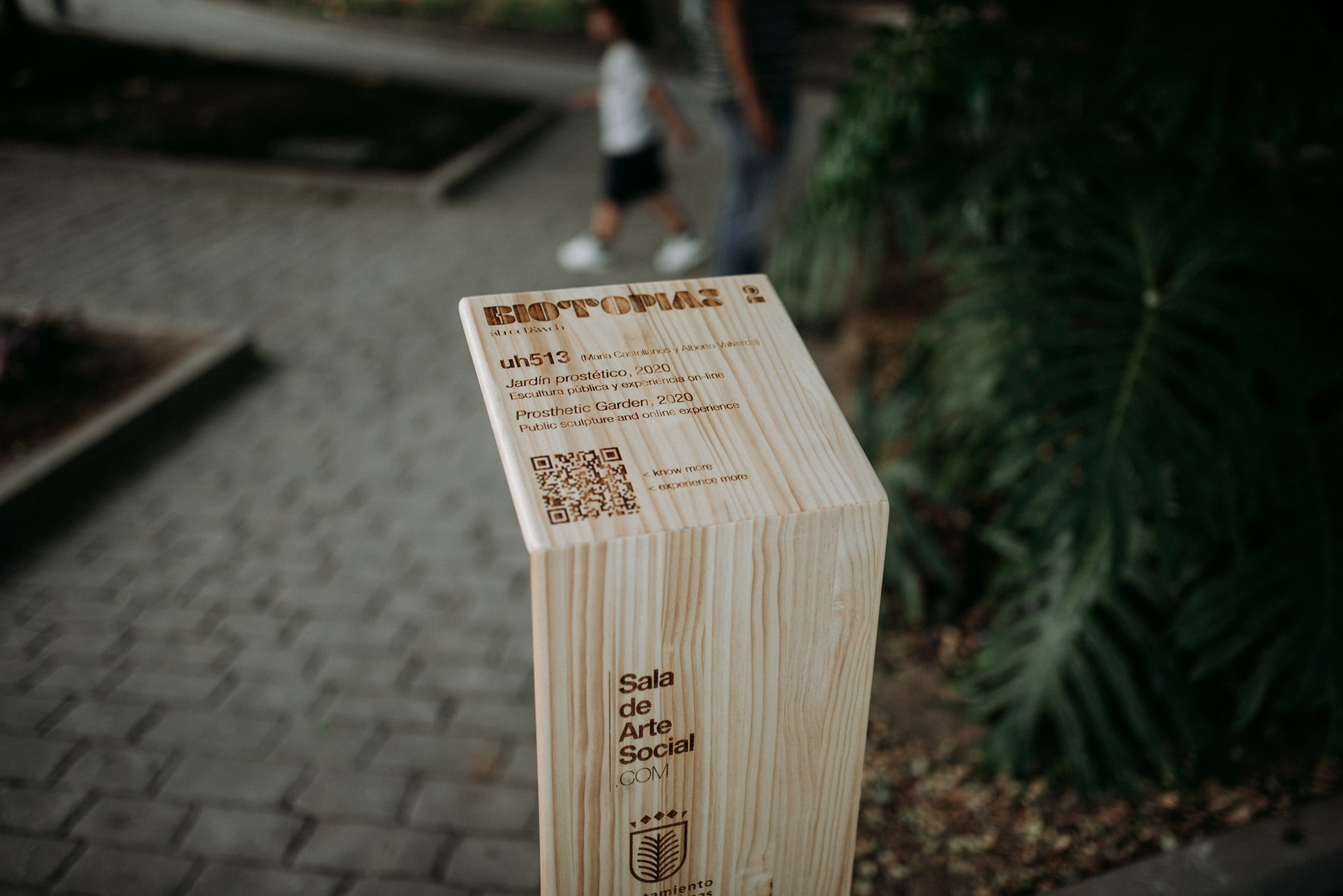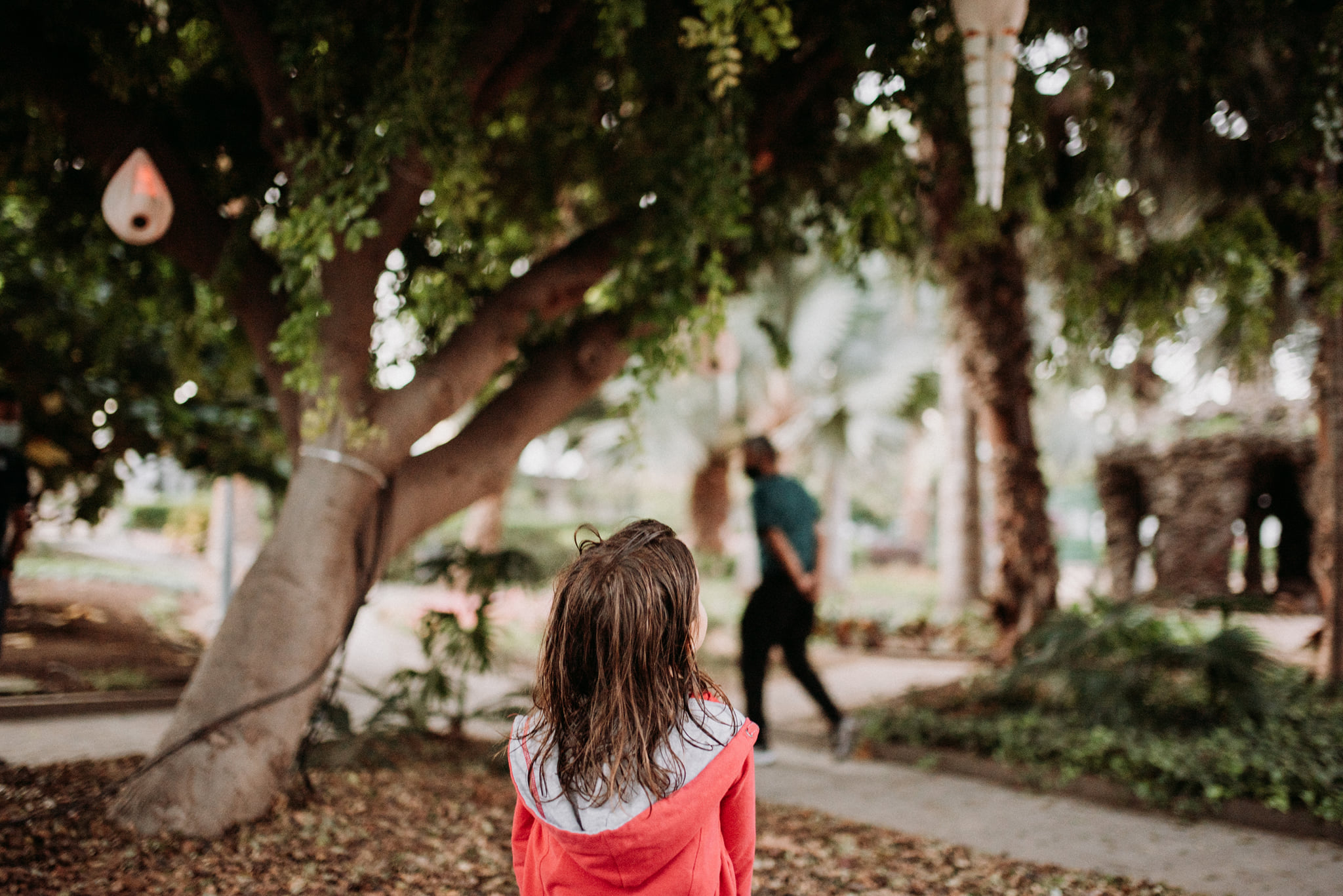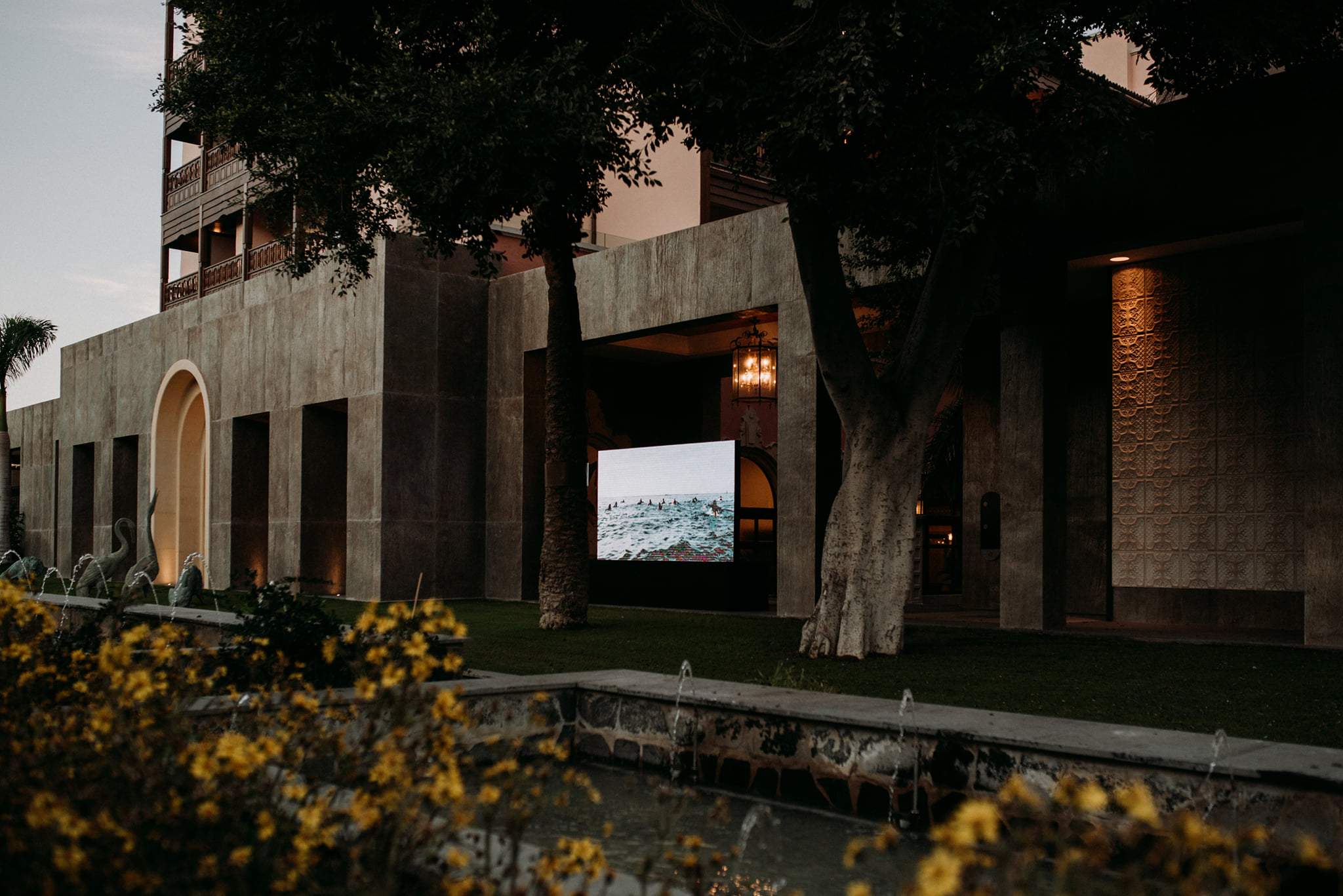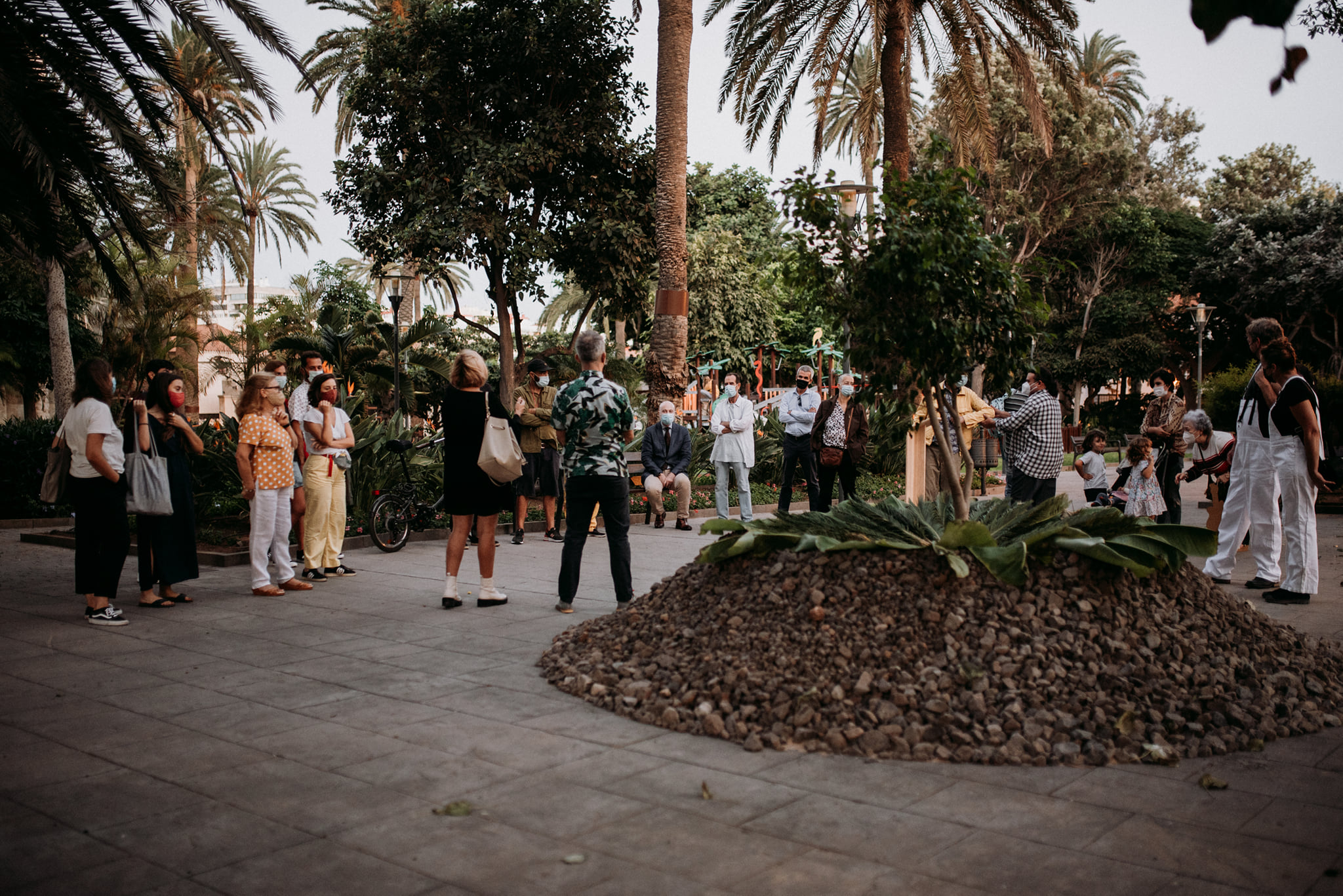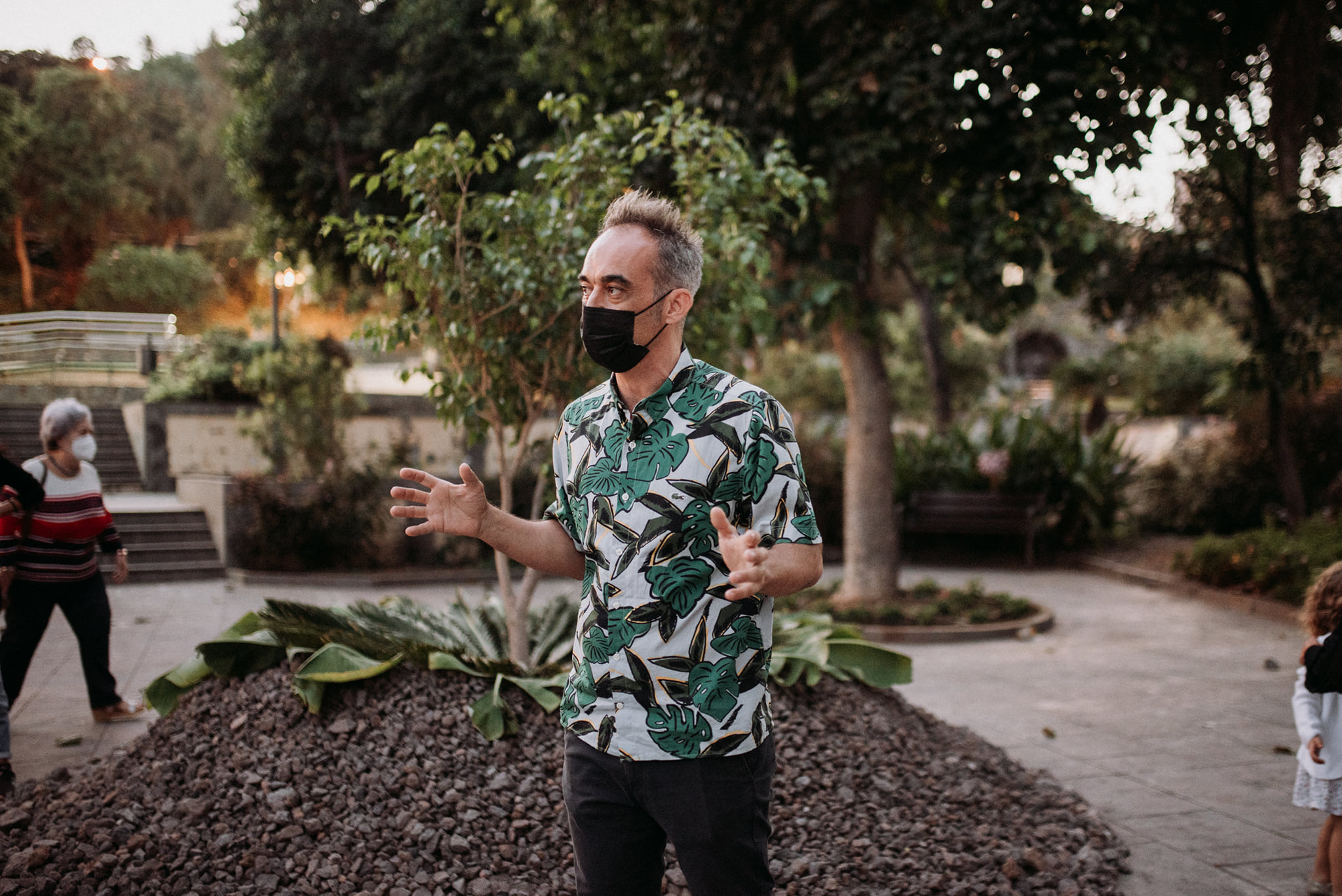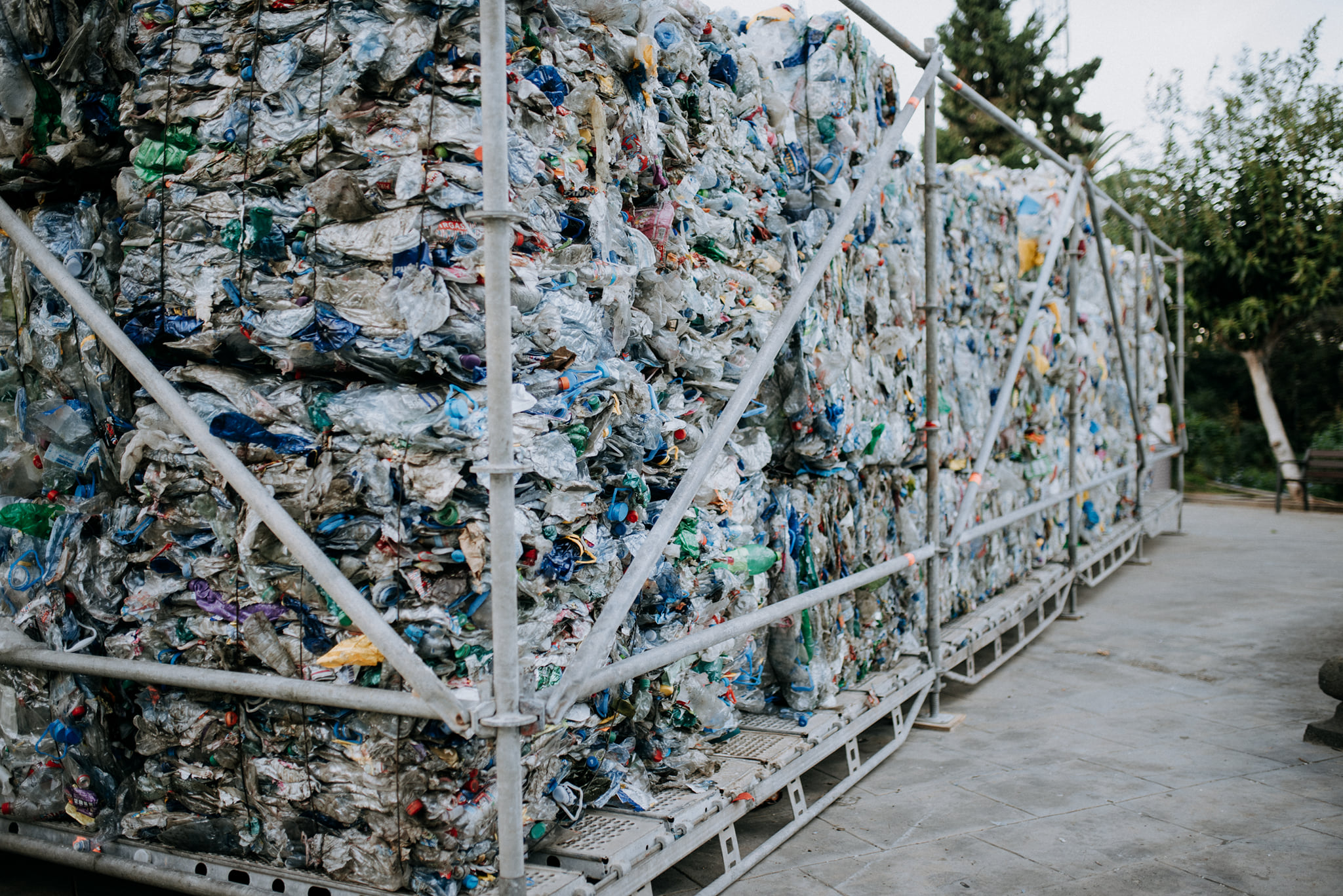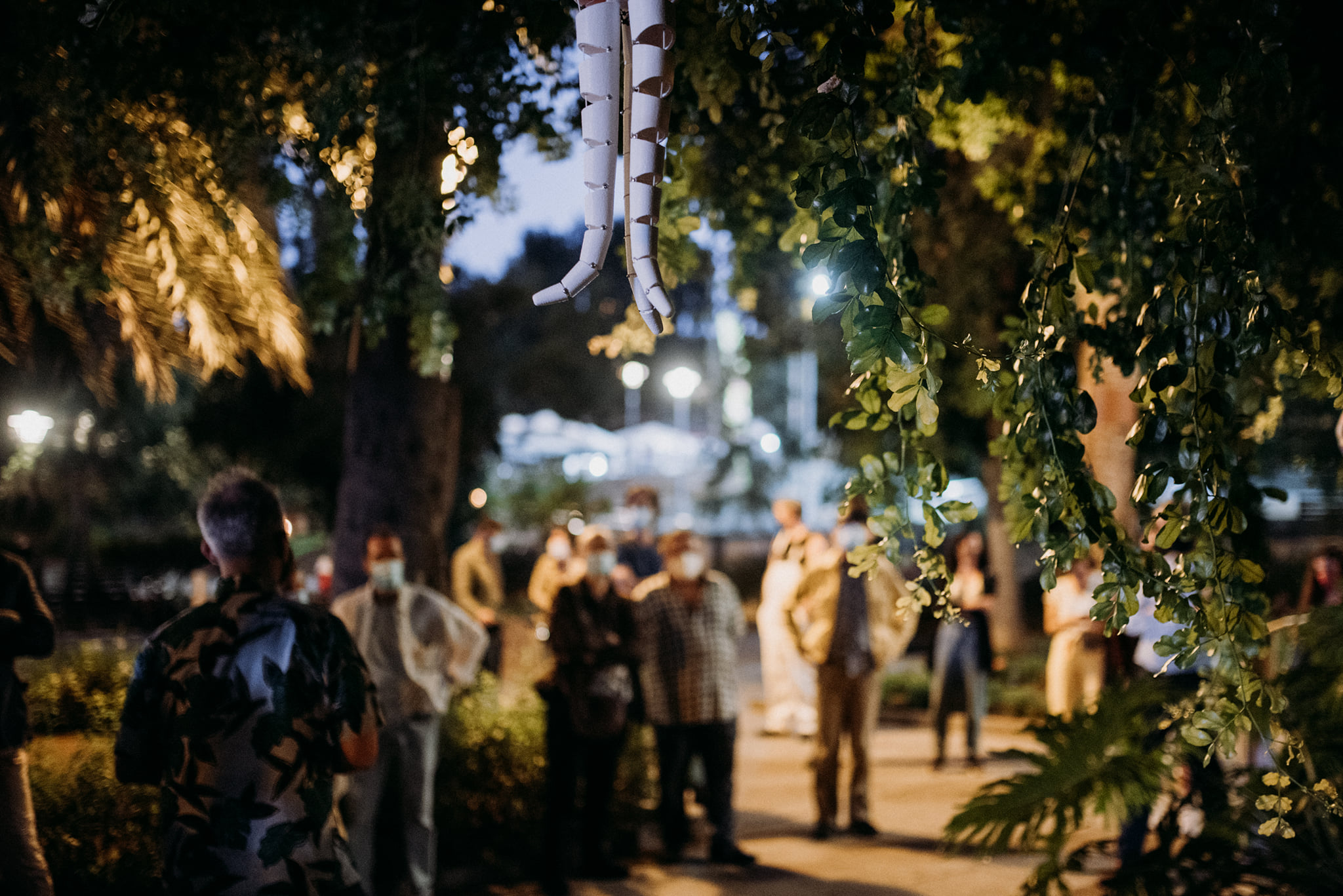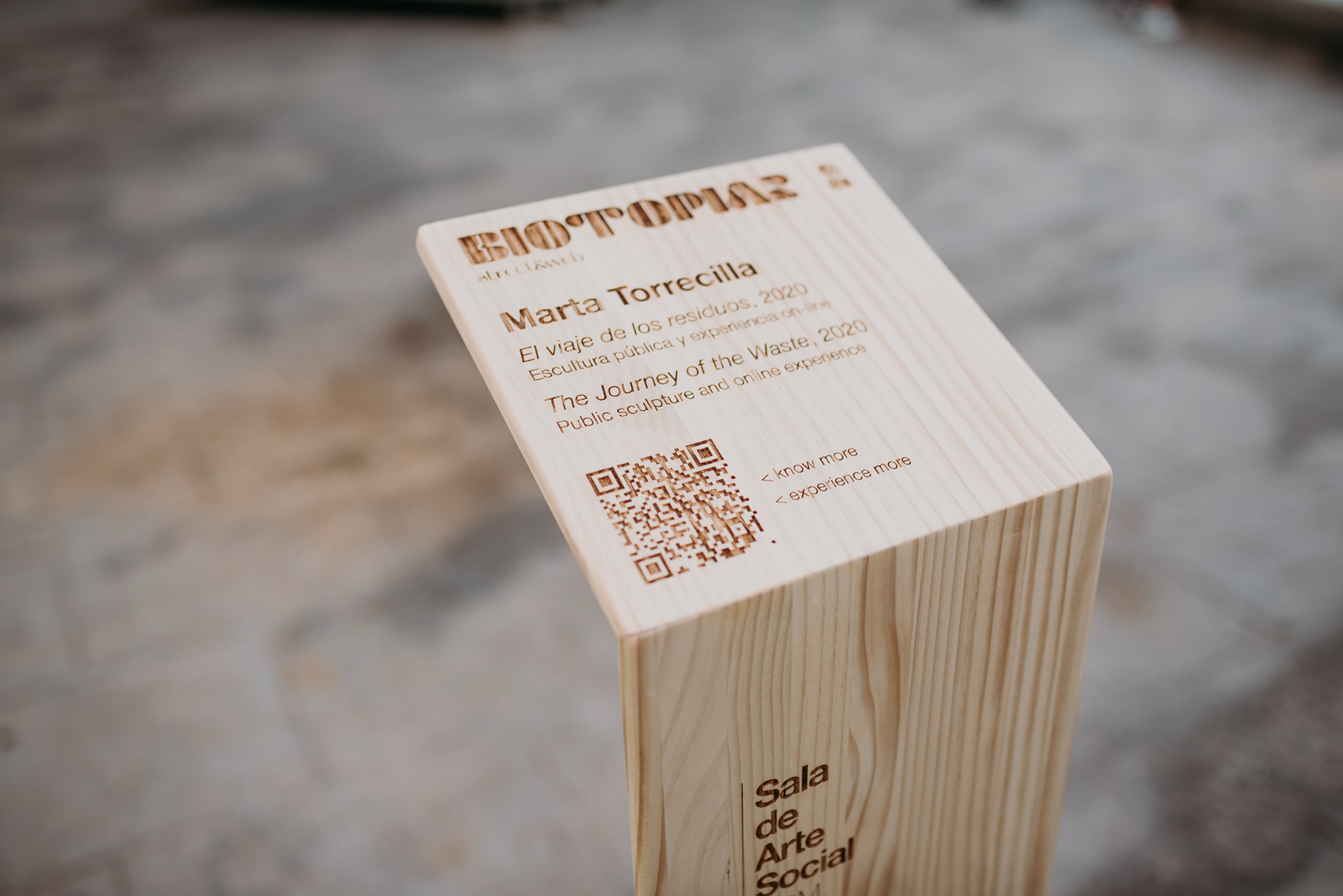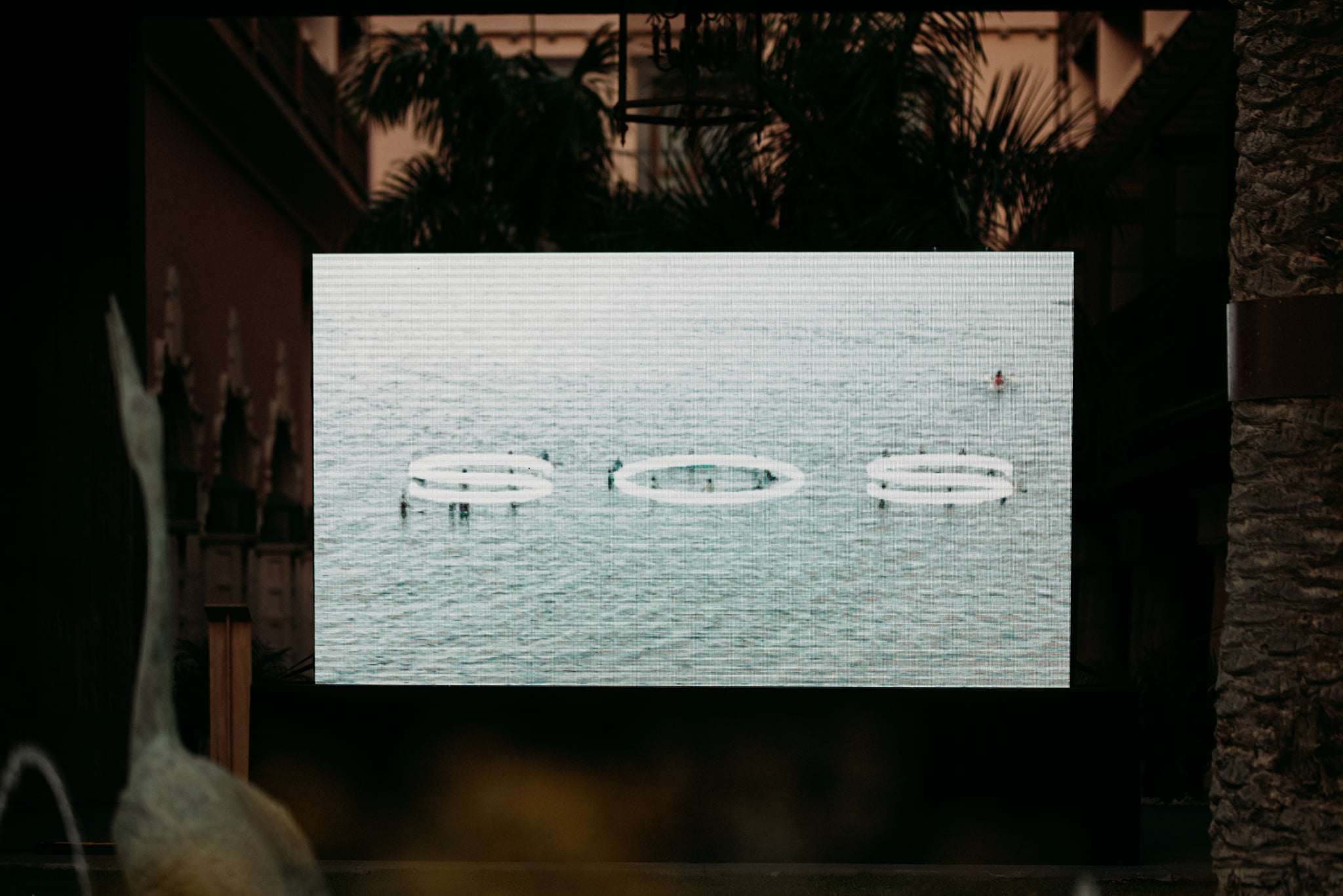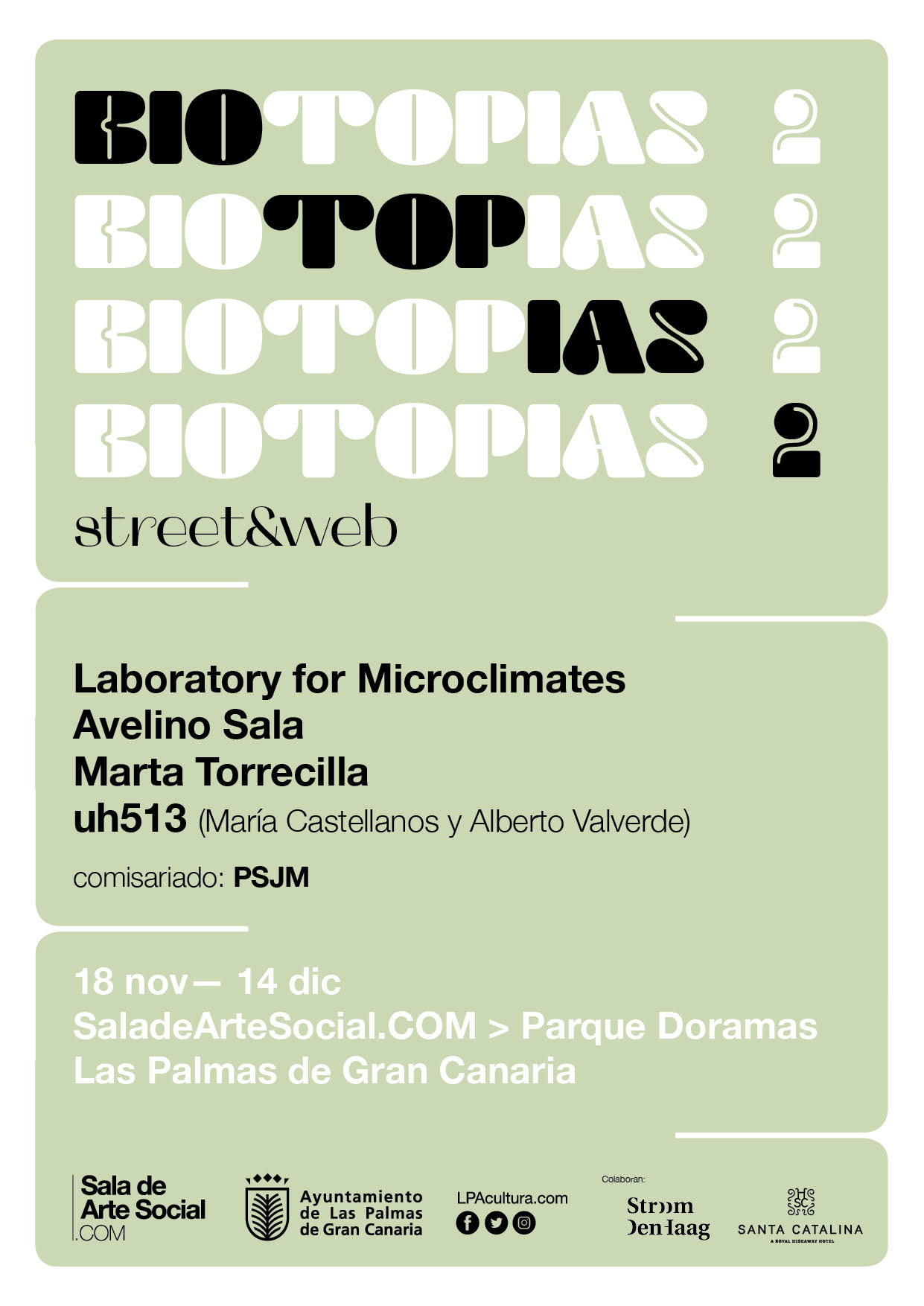
To the commission by the Department of Culture of the City Council of Las Palmas de GC to prepare an exhibition to encourage and promote the visual arts “of” the city and “in” the city, we came up with the proposal of an exhibition at SaladeArteSocial.COM, a place for aesthetic experiences specially created for the web environment with the production of net.art works. The concept of the exhibition space suited for the 21st century means for the works a wider reach, becoming experiences accessible from anywhere in the world with a large number of visitors. Furthermore, the exhibition that we have conceived aims to create a bond between artistic interventions in the public space, in the city, and the virtual space. The concept “street&web” is born as a new way of experiencing works of art in the COVID era using the city as a canvas.
This seems to be the right moment to go ahead with the second edition of the Biotopías programme, the exhibition about art and ecology held at the Sala de Arte Social del Gabinete Literario in 2018, which already combined interventions in the public space with works in the gallery. Now adapted to the circumstances generated by the pandemic, “Biotopías 2” continues the line initiated in its first edition..
“Biotope”, in biology and ecology, refers to an area of uniform environmental conditions that provides vital space for a set of flora and fauna: a living environment. The term “biotopias” is a neologism that PSJM proposes to poetically characterize aesthetic responses to the situation of urgency of the planet. “Biotopias” takes its meaning from “biotope,” but it also relates to Foucault’s theory of space. In this theory, the French philosopher distinguished three classes of spaces: the topies (real and everyday spaces), utopias (ideal spaces, not real) and heterotopias (real spaces, but separated from the everyday life). The phonetics of “biotopias” refers to both living environments and those places halfway between everyday life and utopia. Exceptional spaces of life created to raise awareness. As Marcuse claimed in The Aesthetic Dimension, art must propose «promises of happiness», utopias, regulatory ideas that must be pursued. This way the interventions proposed for “Biotopias” are poetic actions that establish a utopia in the topia, ecological micro-utopias that can be achieved. All the pieces that take part in the exhibition have been created specifically for the occasion, with the mind set on the creation of sustainable works of art, produced locally in order to incur the minimum possible emissions due to the transport of works. For the curatorial approach, it has also been present the combination of peninsula residents artists and local ones with repercussion abroad, as well as the equal balance in relation to gender equality. The collaborative and participatory nature of the proposals and the performance both in the exhibition hall and in the public space have also been determining factors in shaping this exhibition project. On the other hand, the spectacular nature and the ecological, collaborative and educational values of the interventions seem to guarantee the visibility that requires fulfilling the main objective of the exhibition: to raise awareness through creativity and the ethical behaviour of environmental justice.
Biotopías 2 consists of four street&web interventions street&web with focus on environmental issues: the Dutch team Laboratory for Microclimates Laboratory for Microclimates, an international reference in art and ecology; Avelino Sala an artist with an extensive international career in the field of social art and interventions in public spaces; uh513 (María Castellanos and Alberto Valverde), artists and technologists who combine robotics with work with plant species; and, finally, Marta Torrecilla, a young architect and local emerging artist whose work focuses on ecological awareness.


